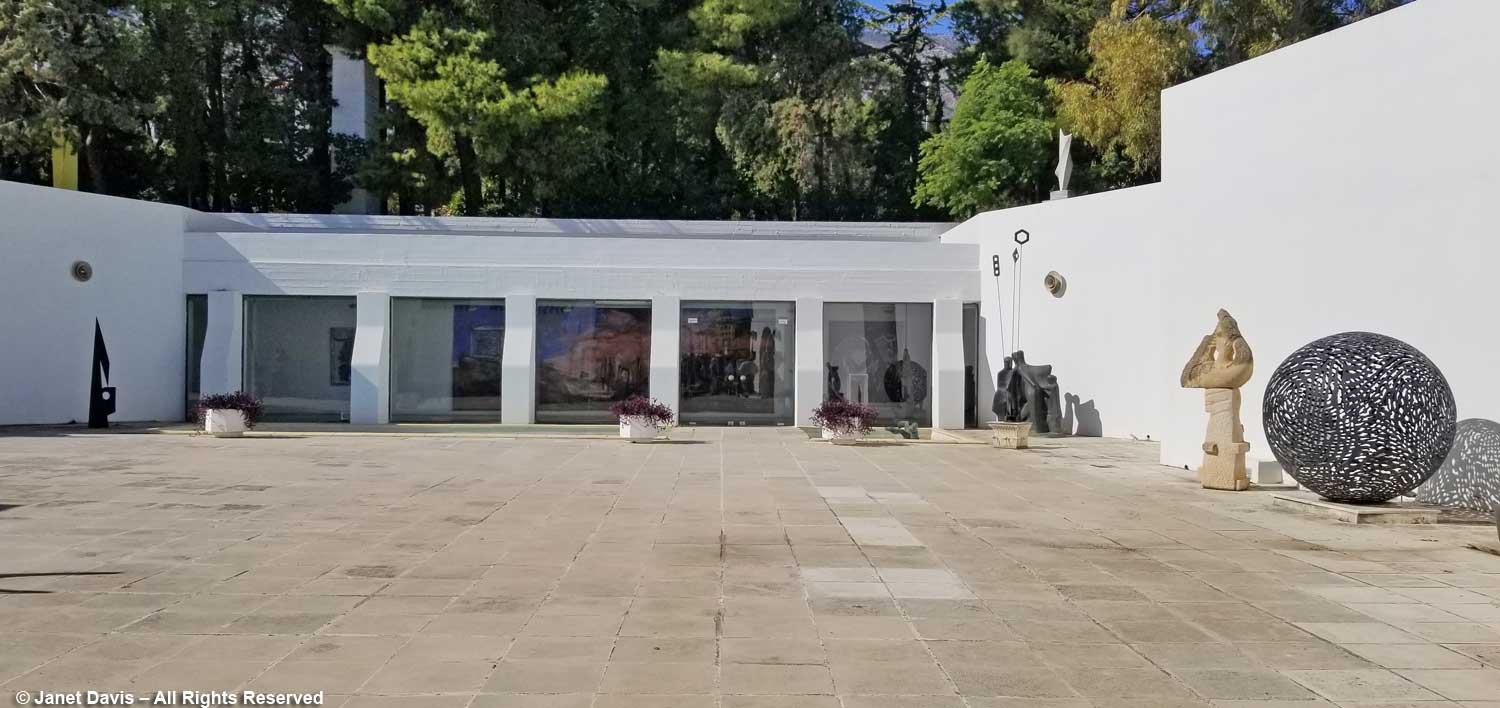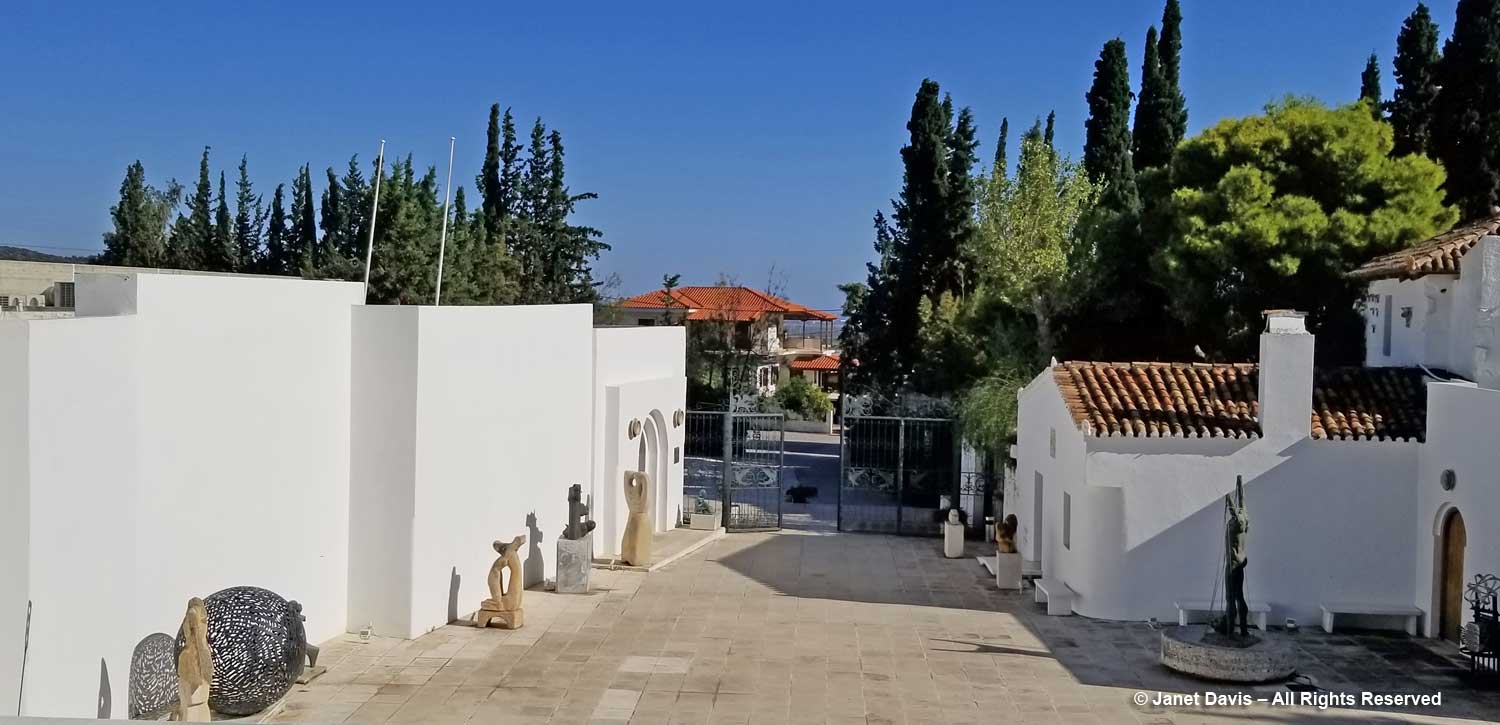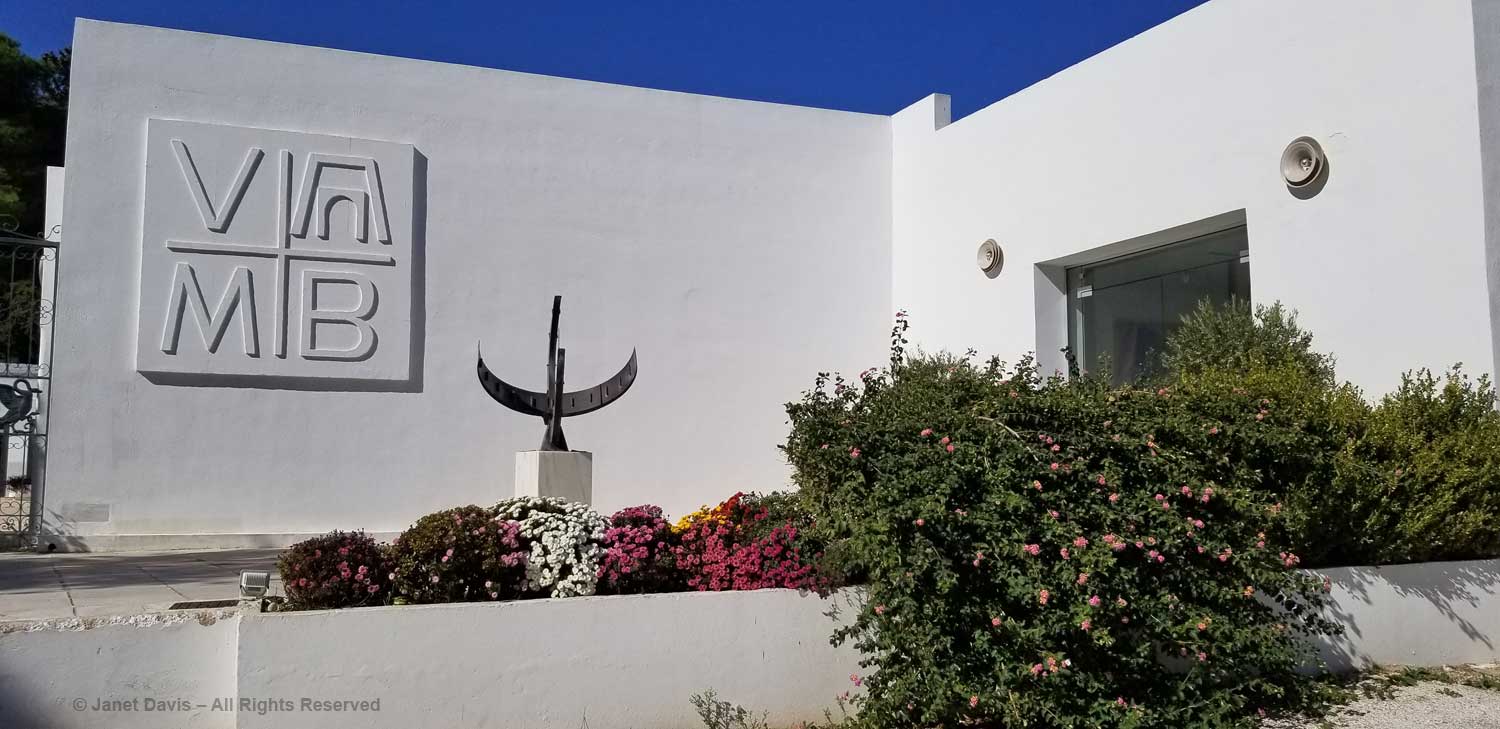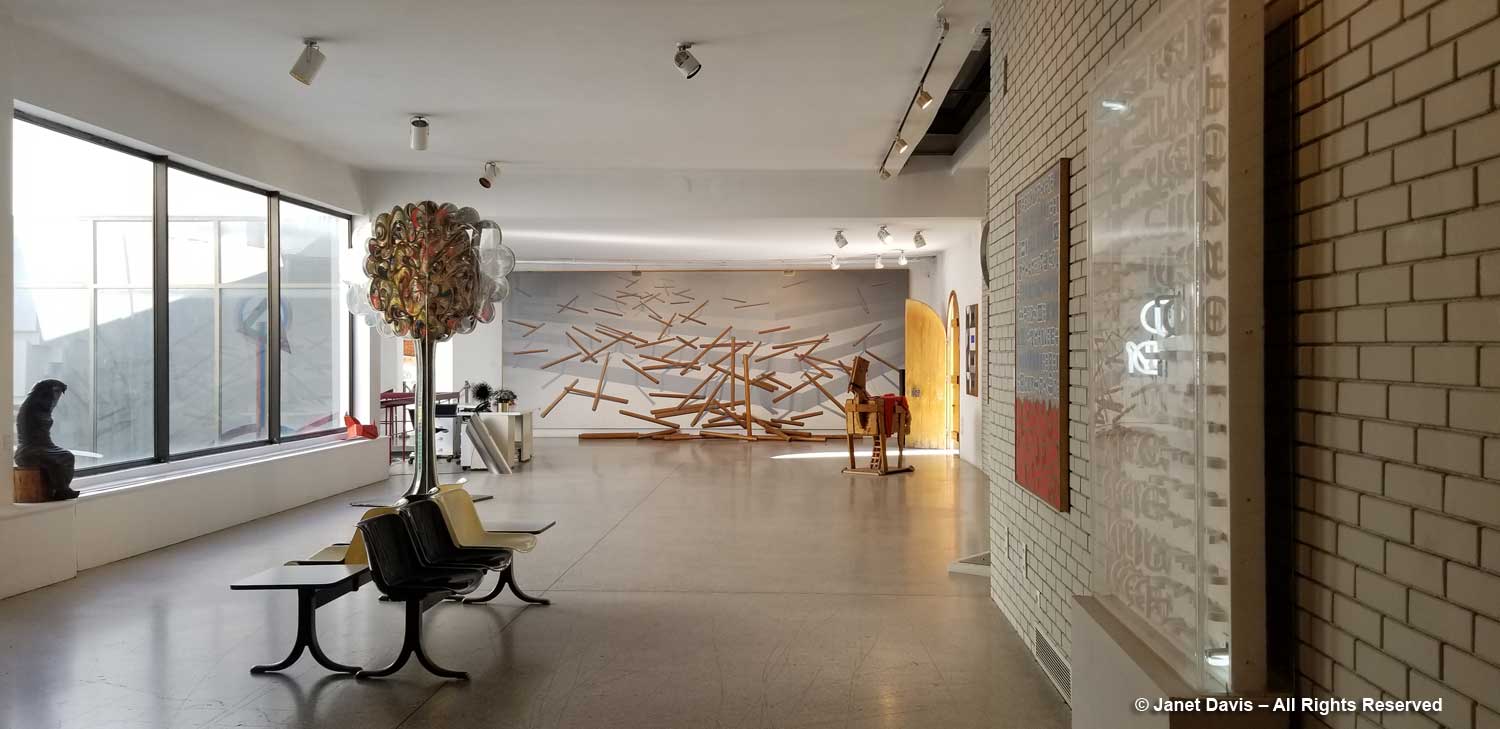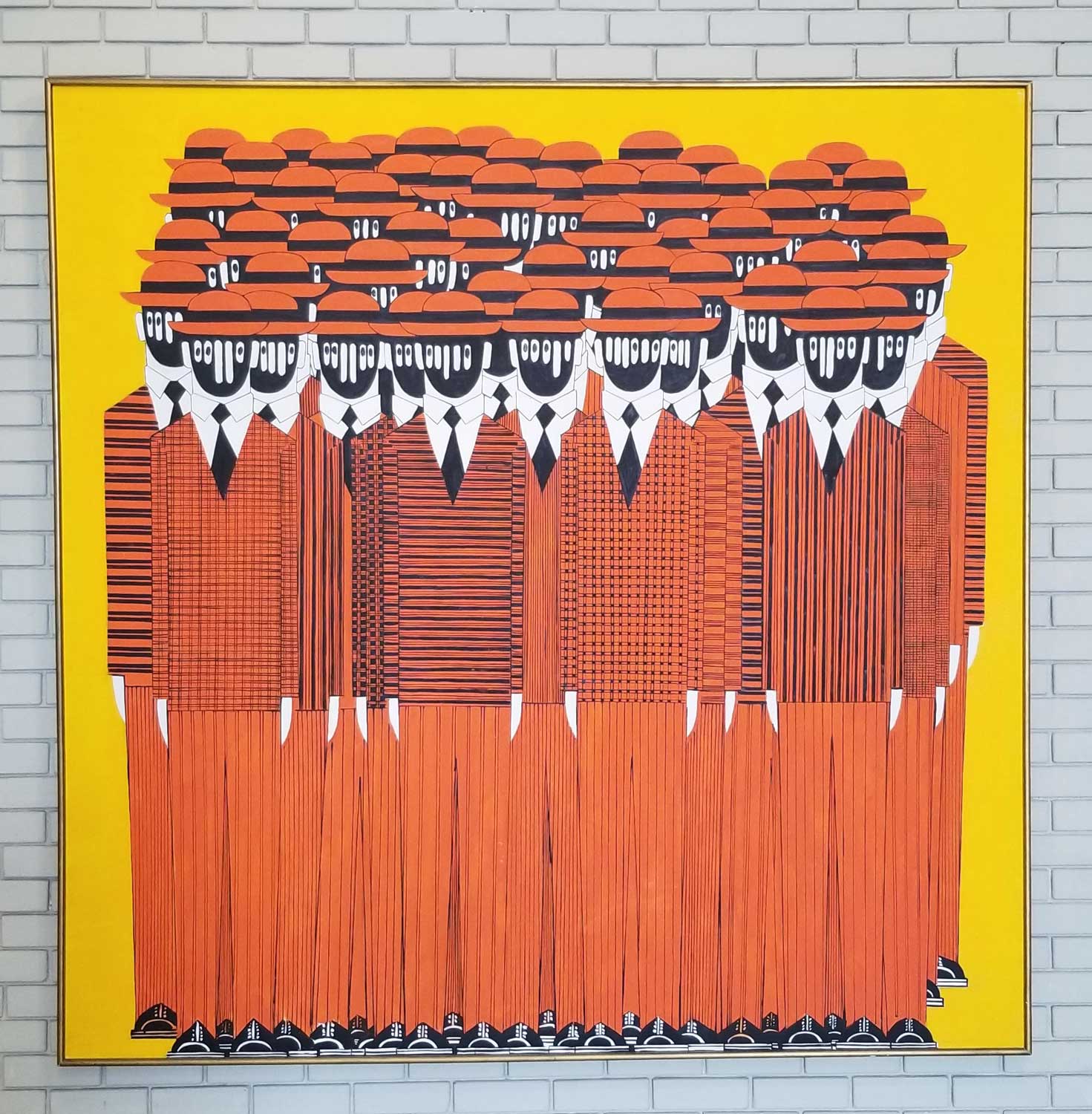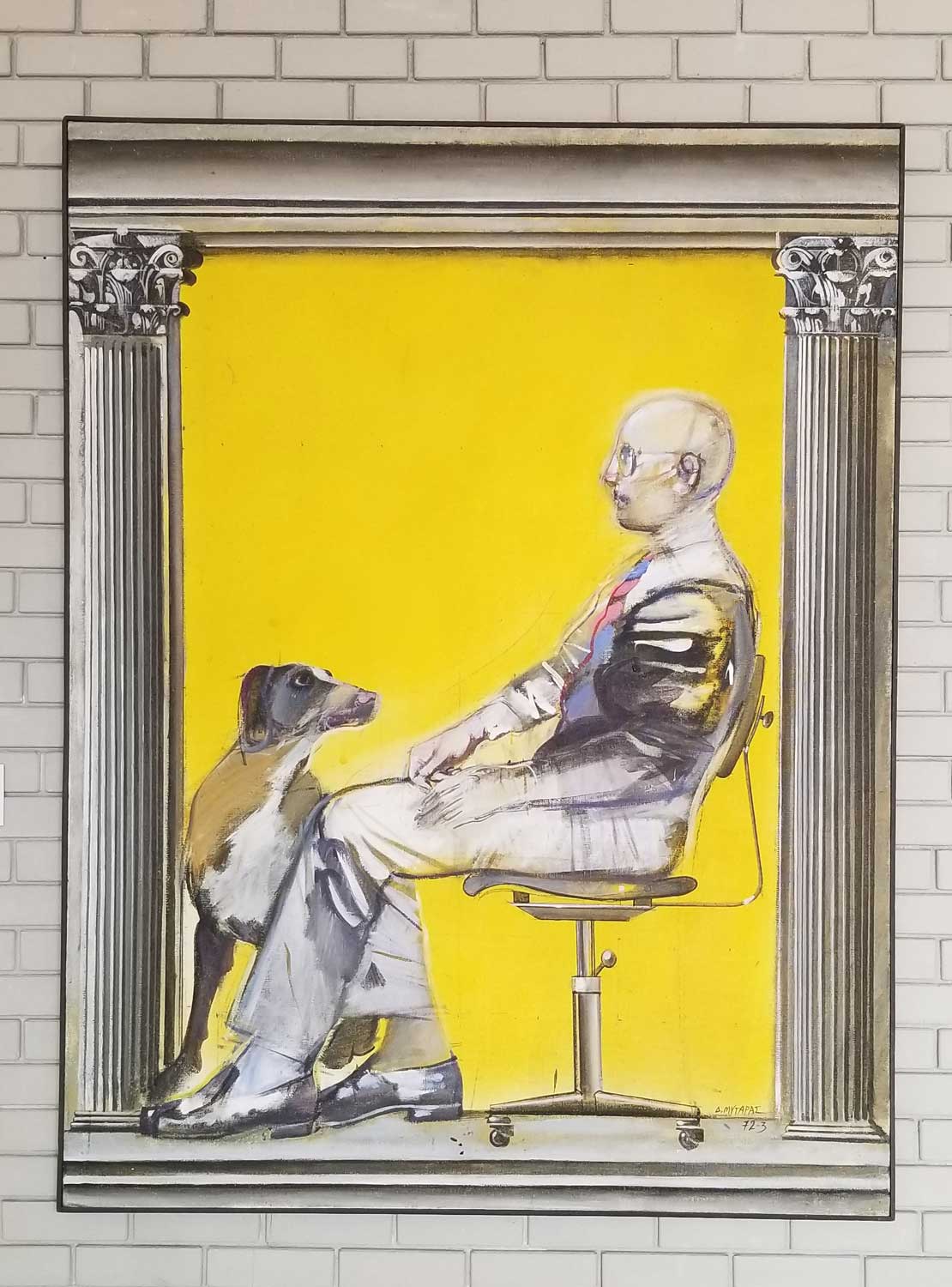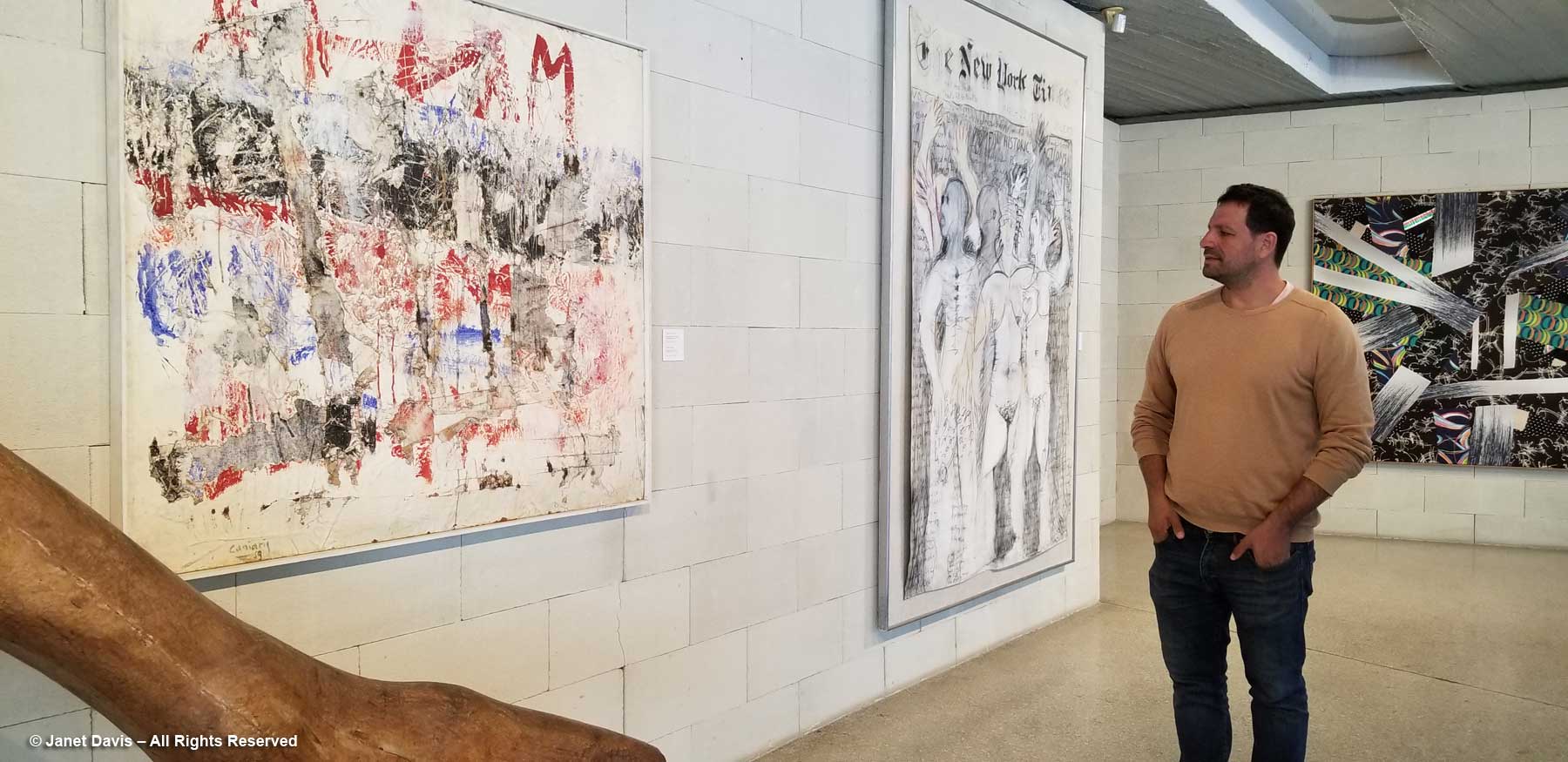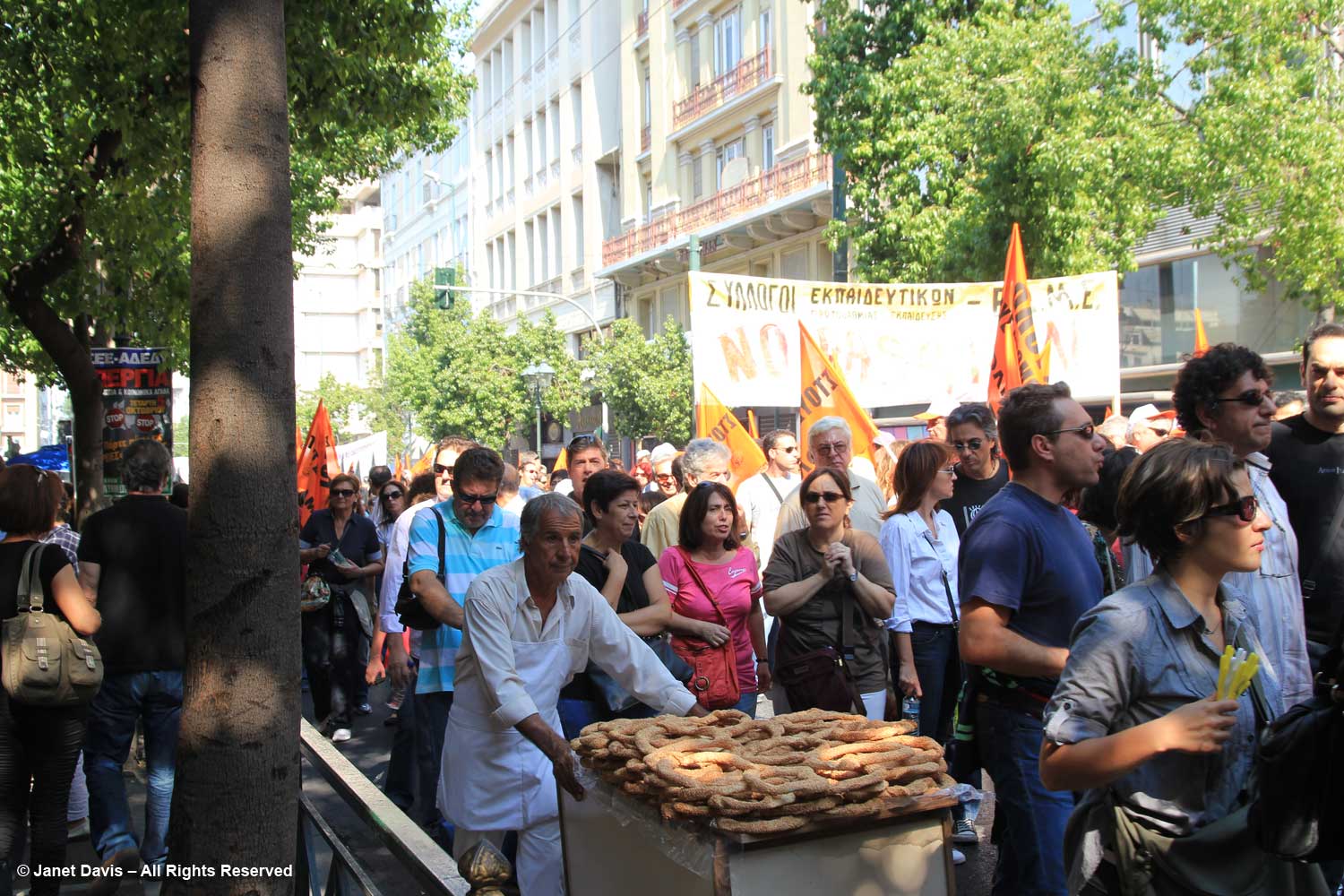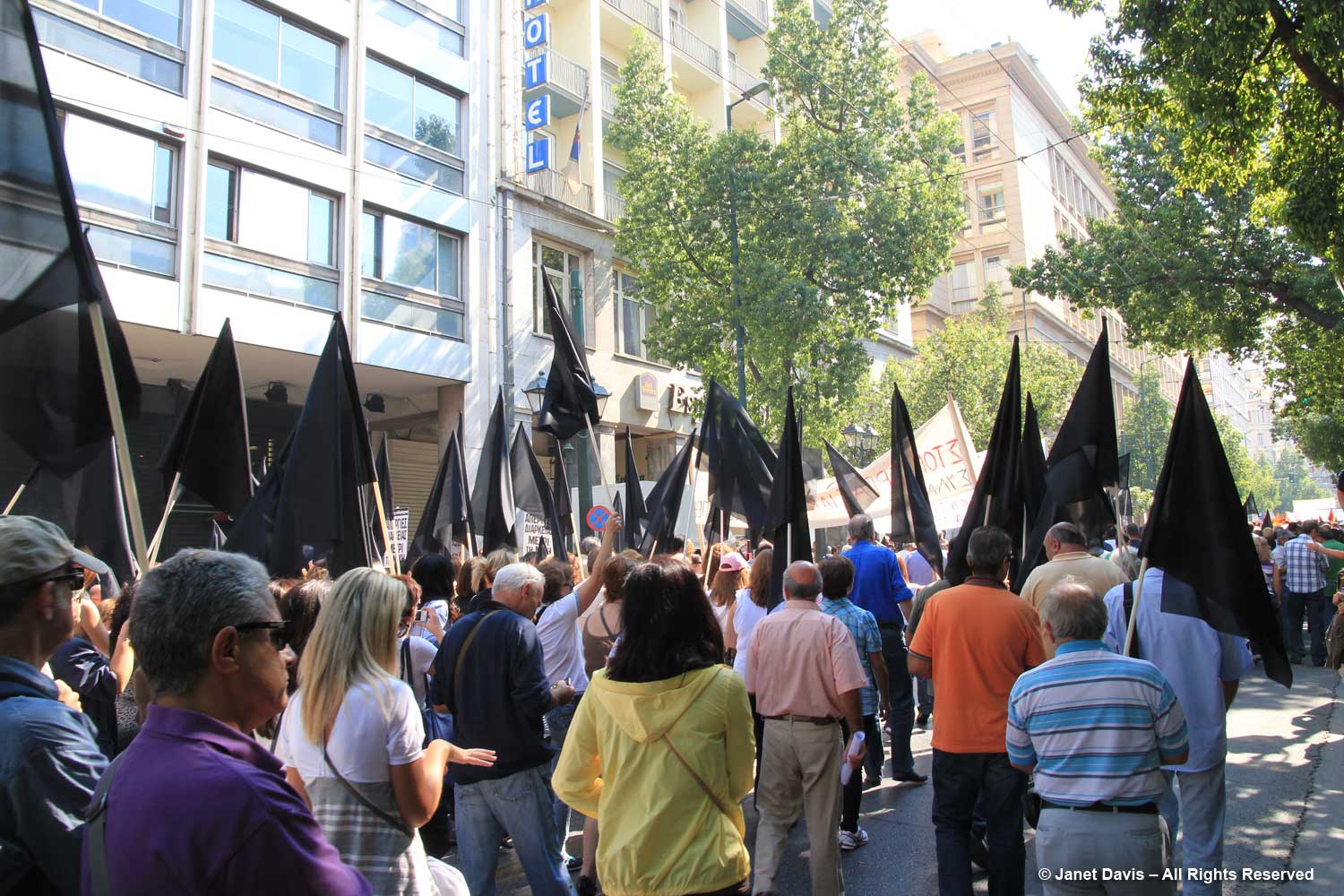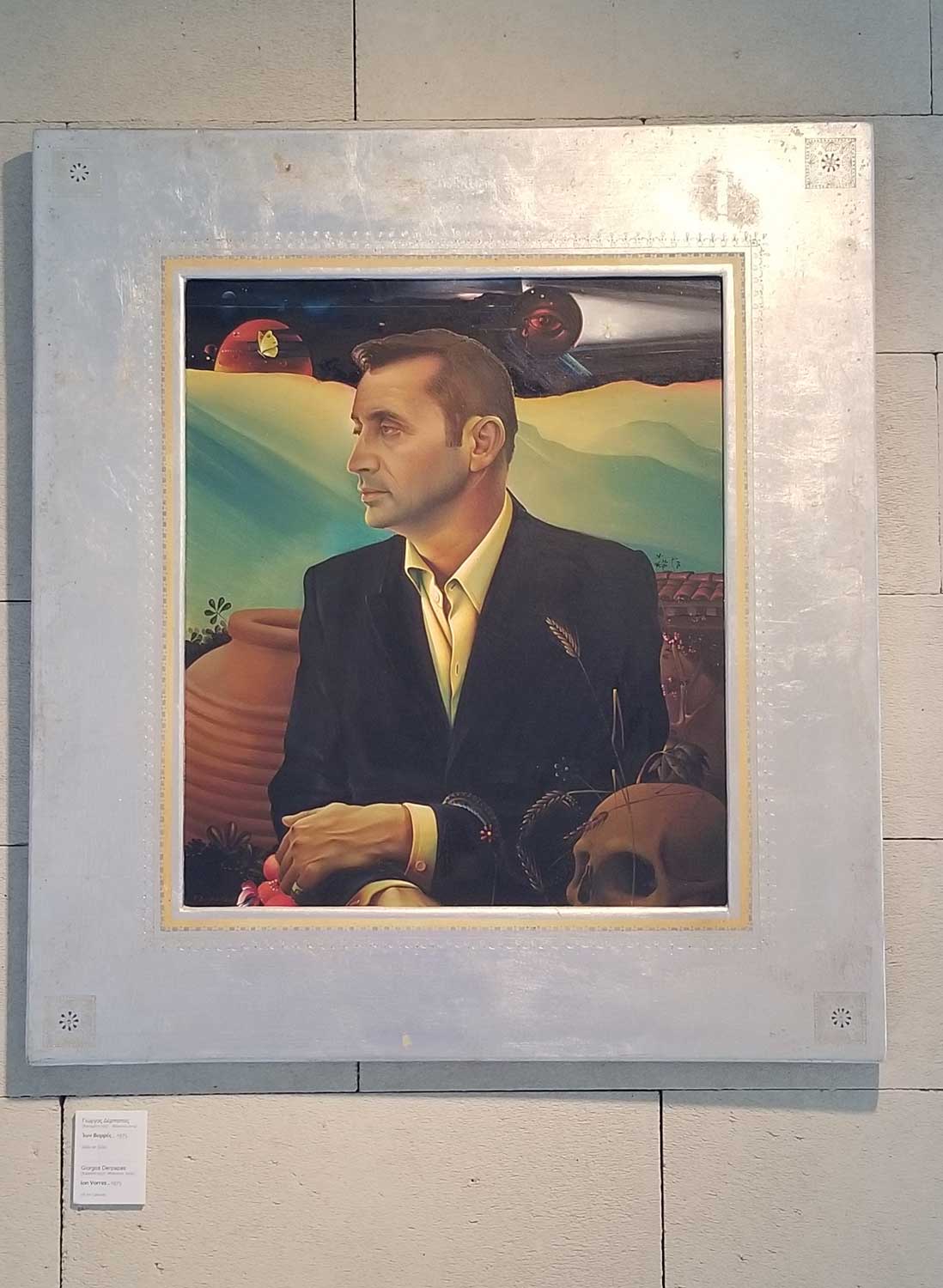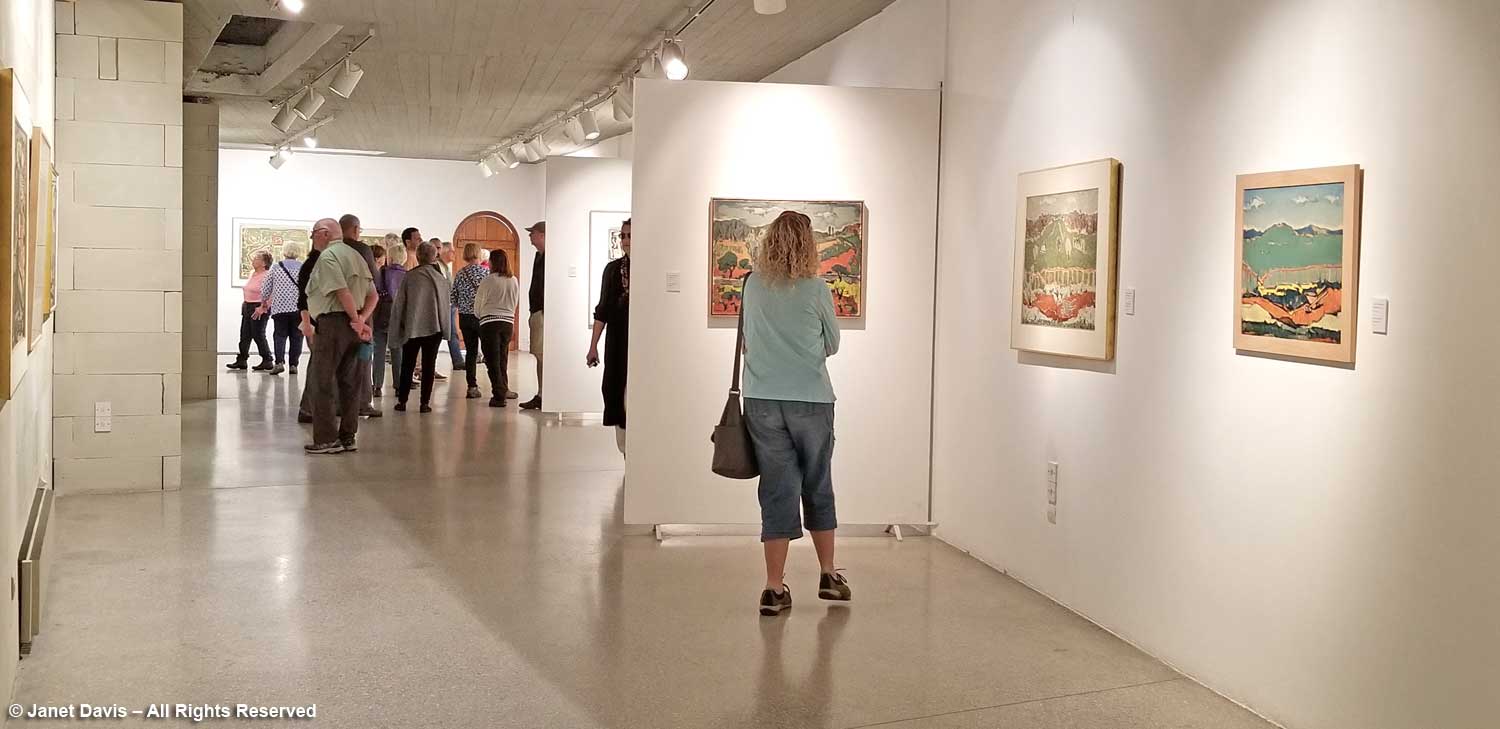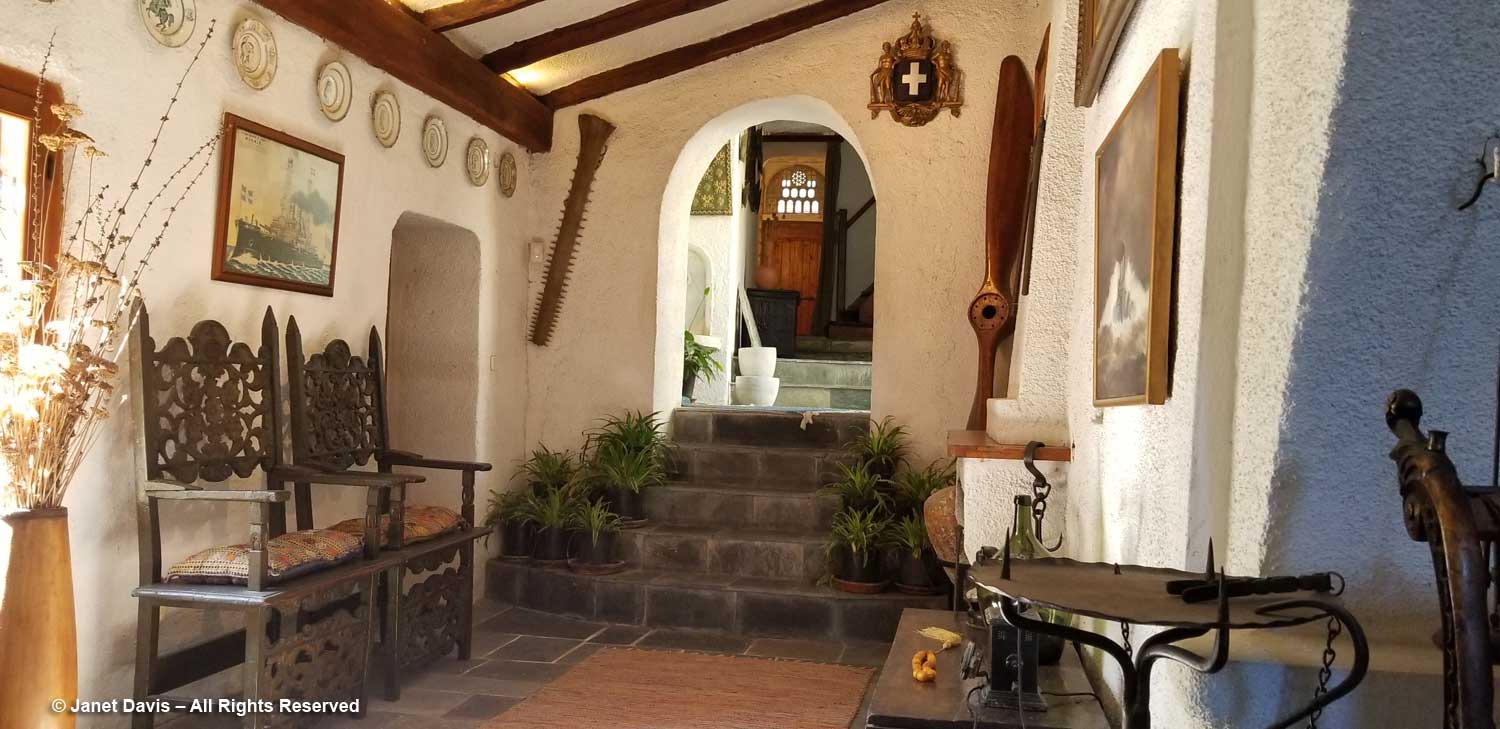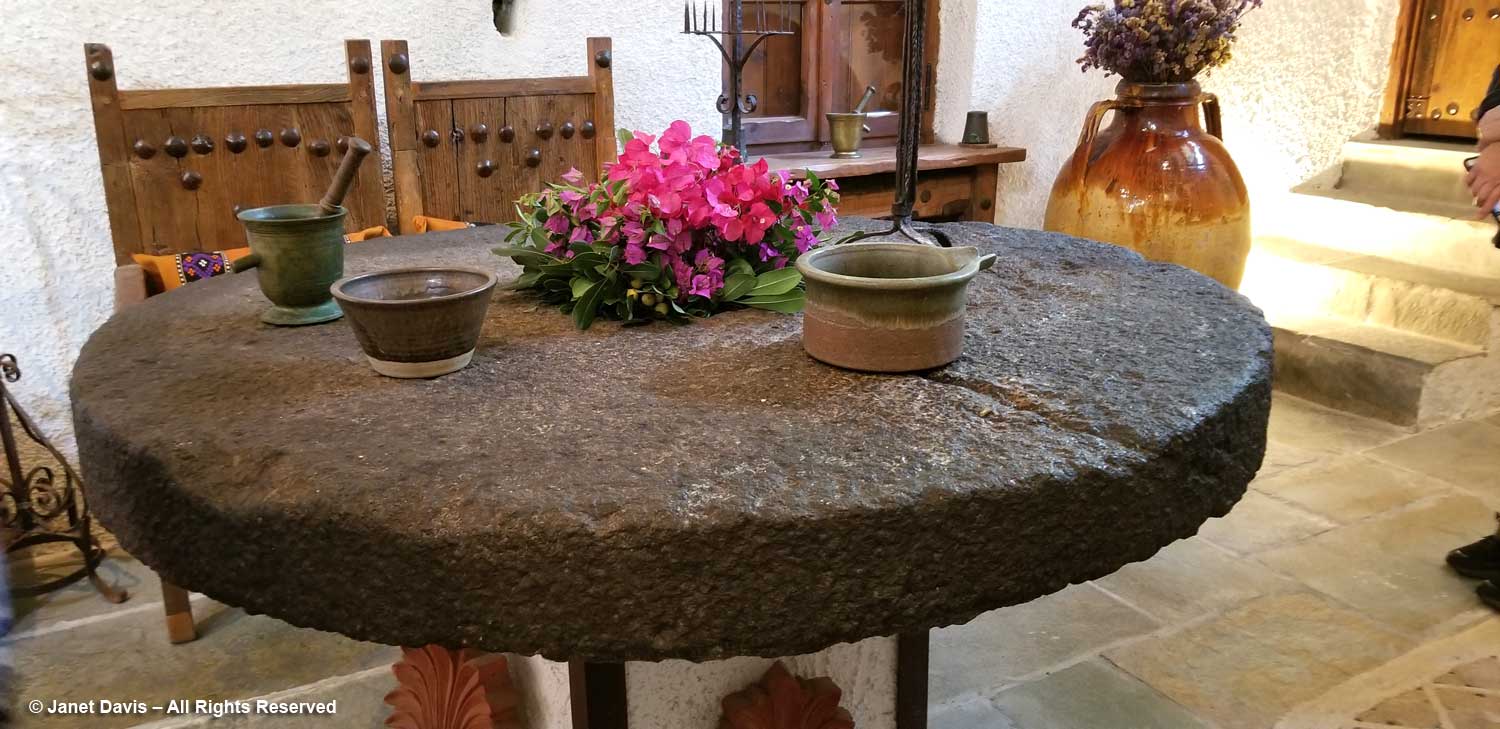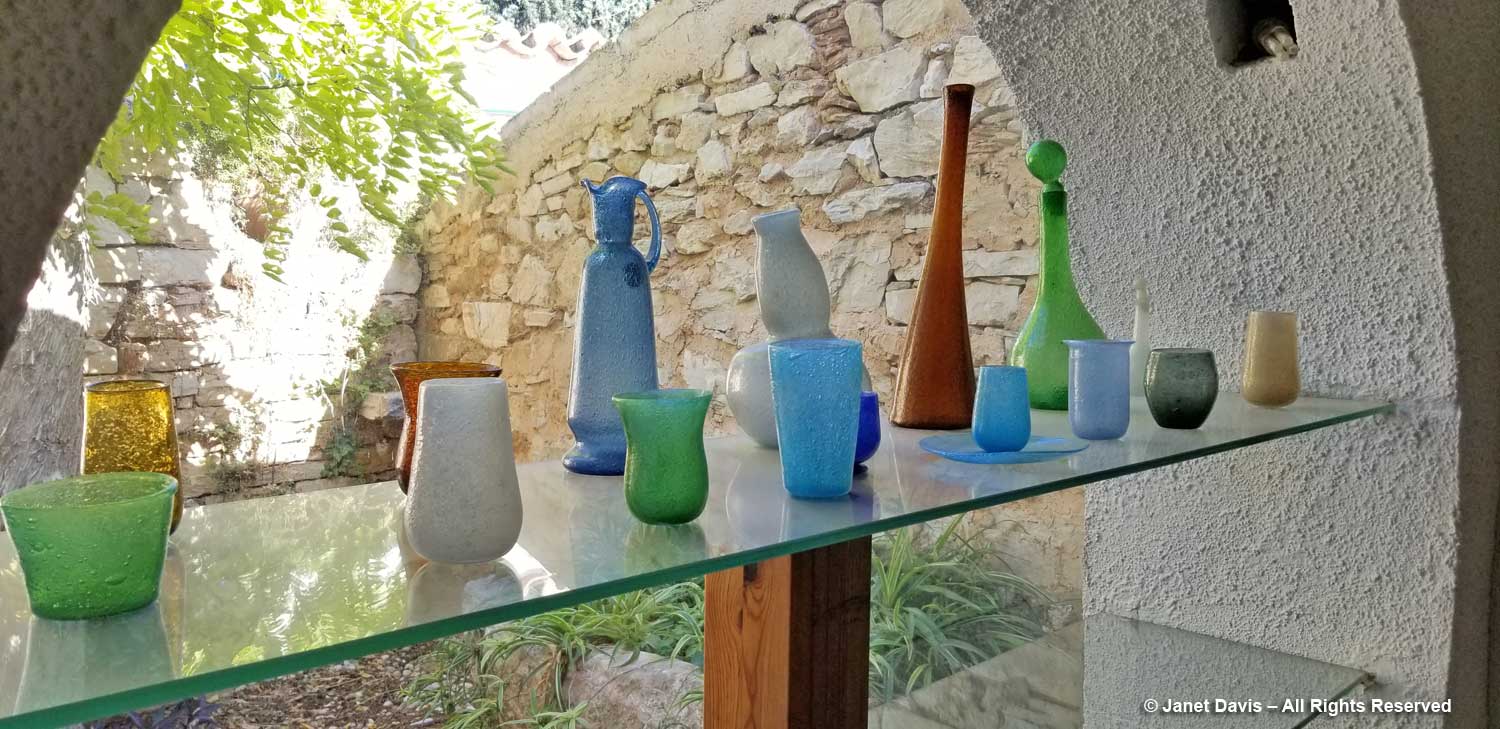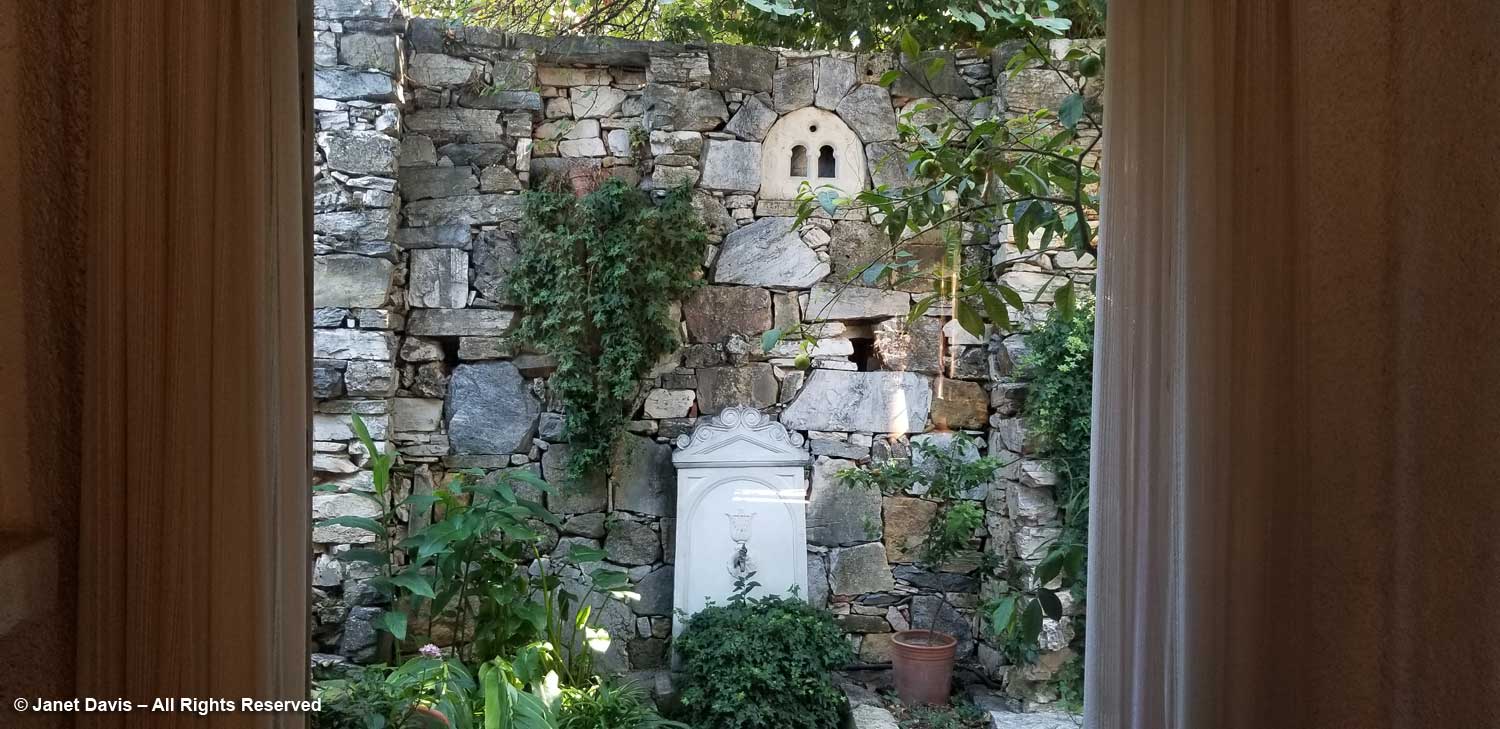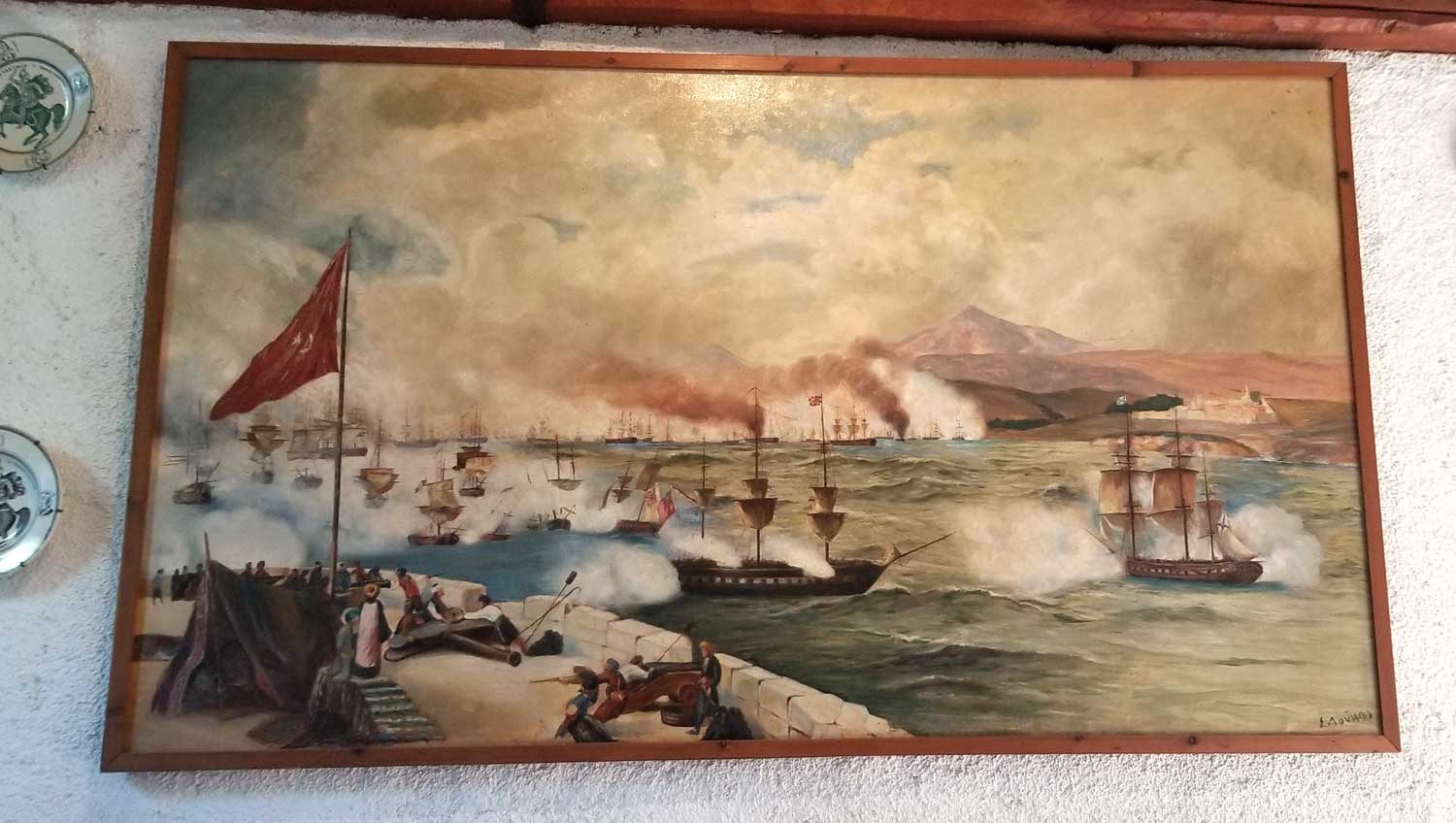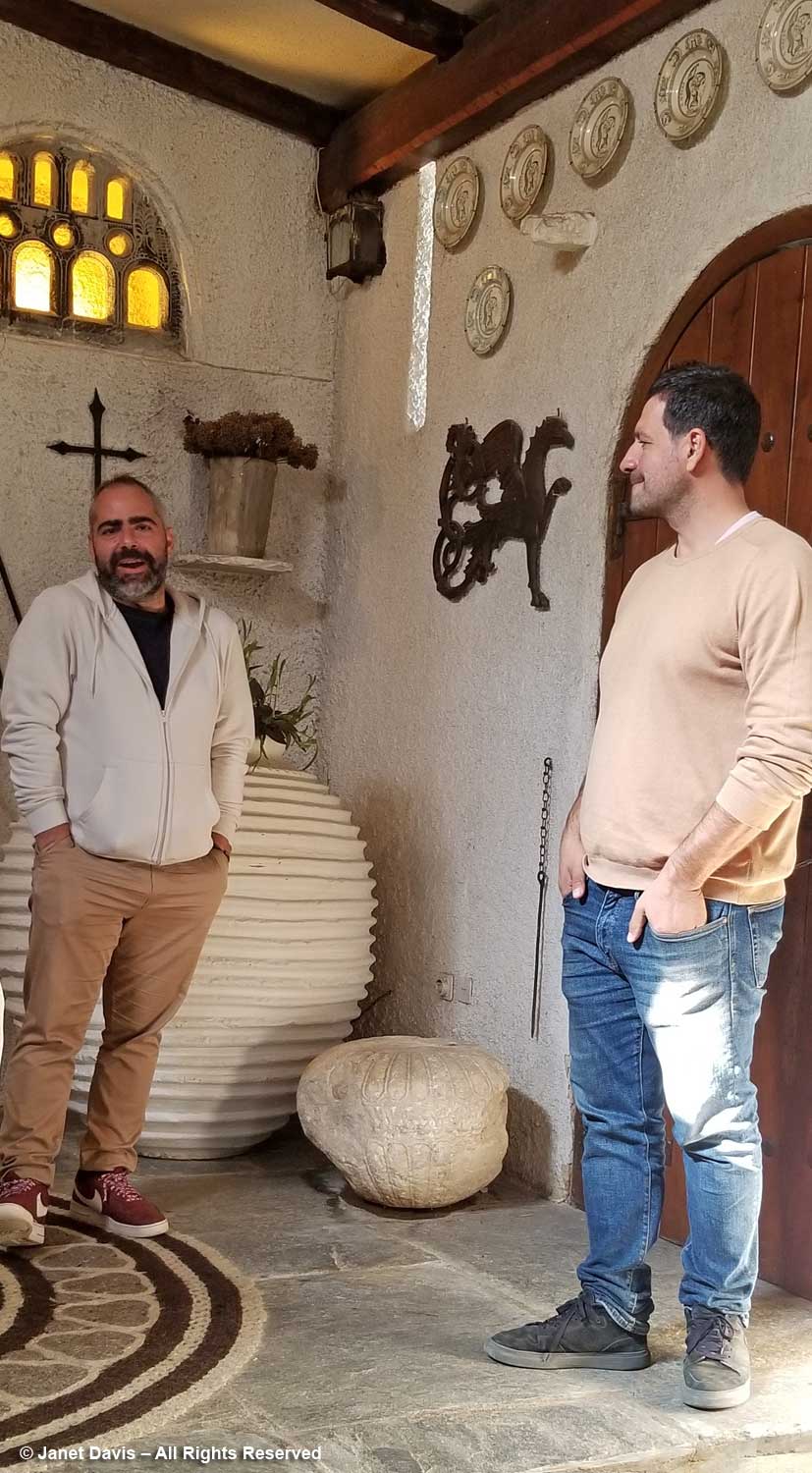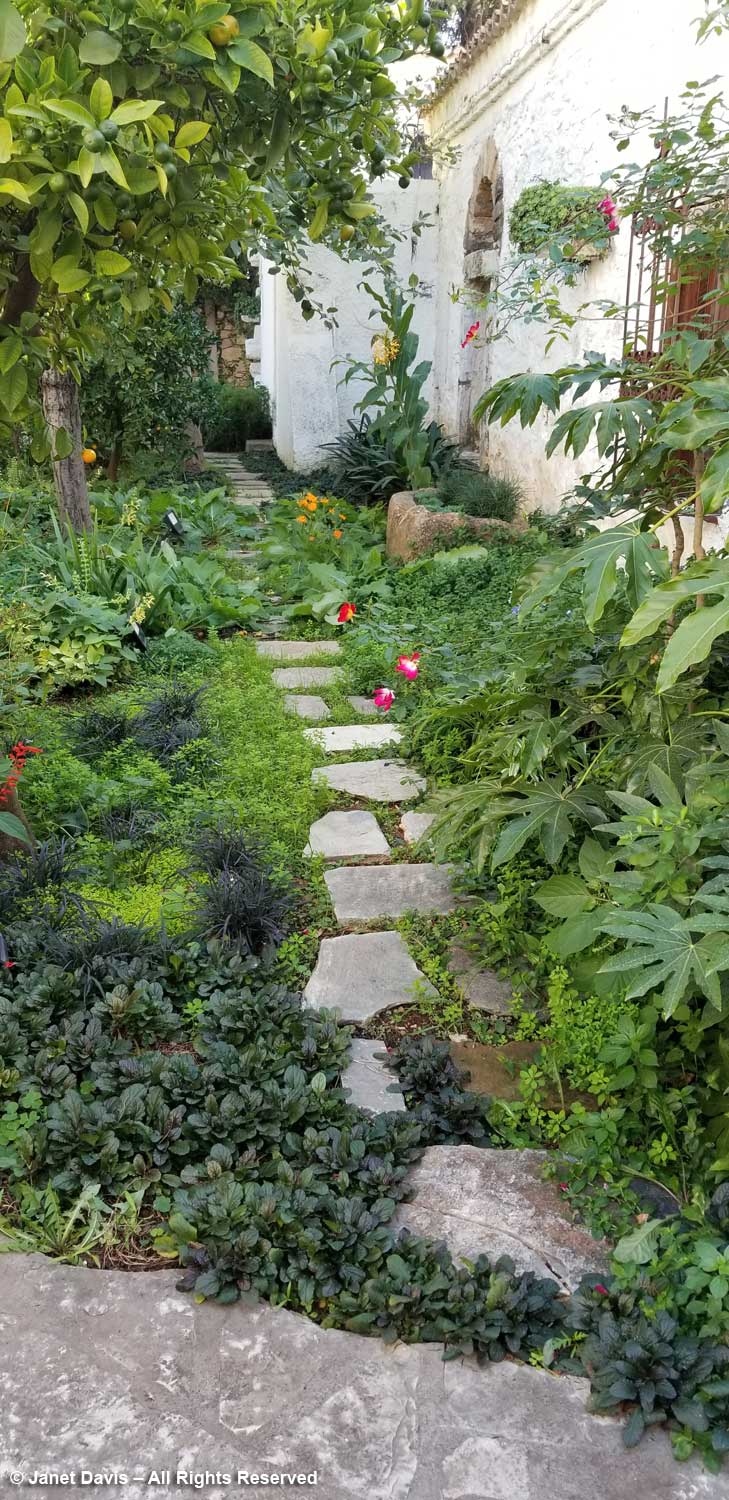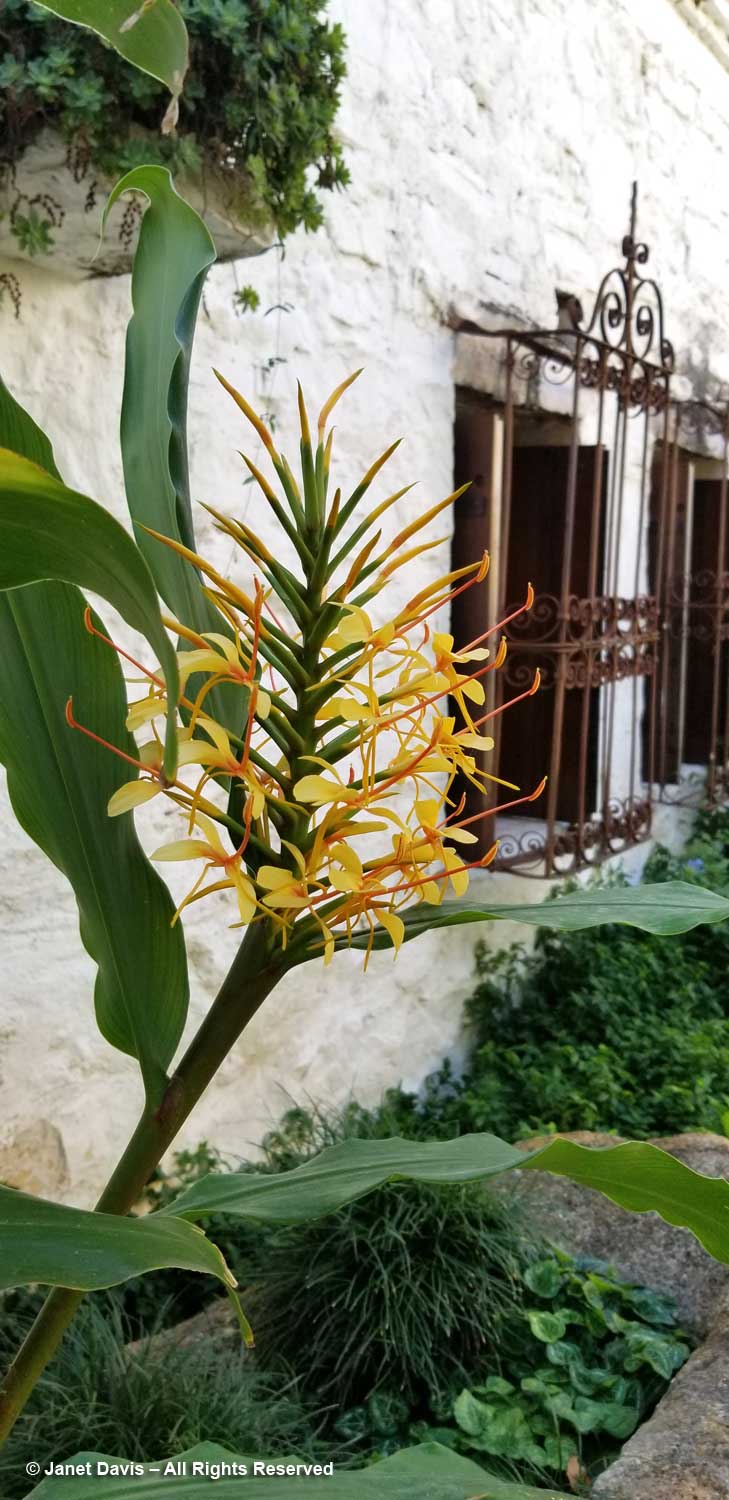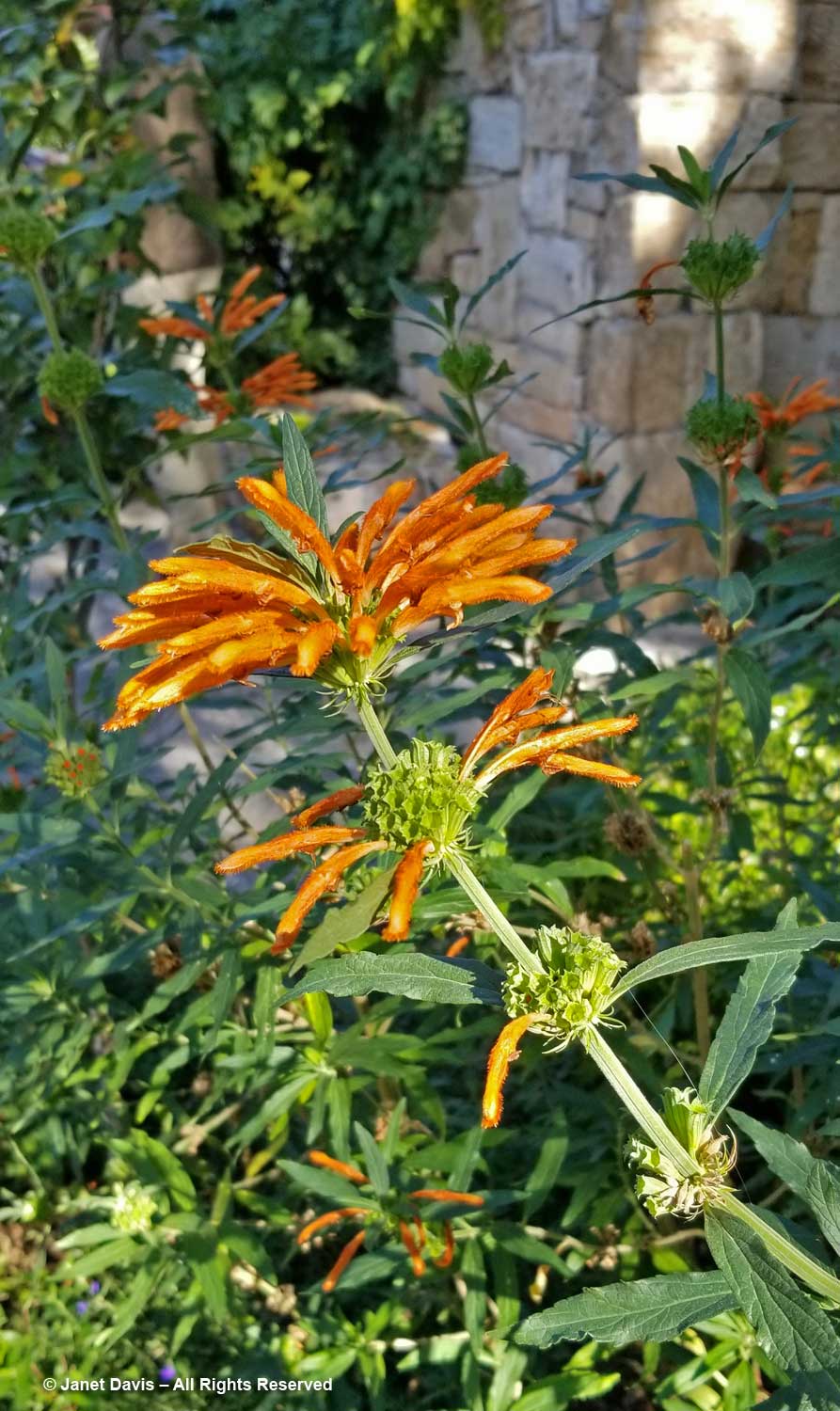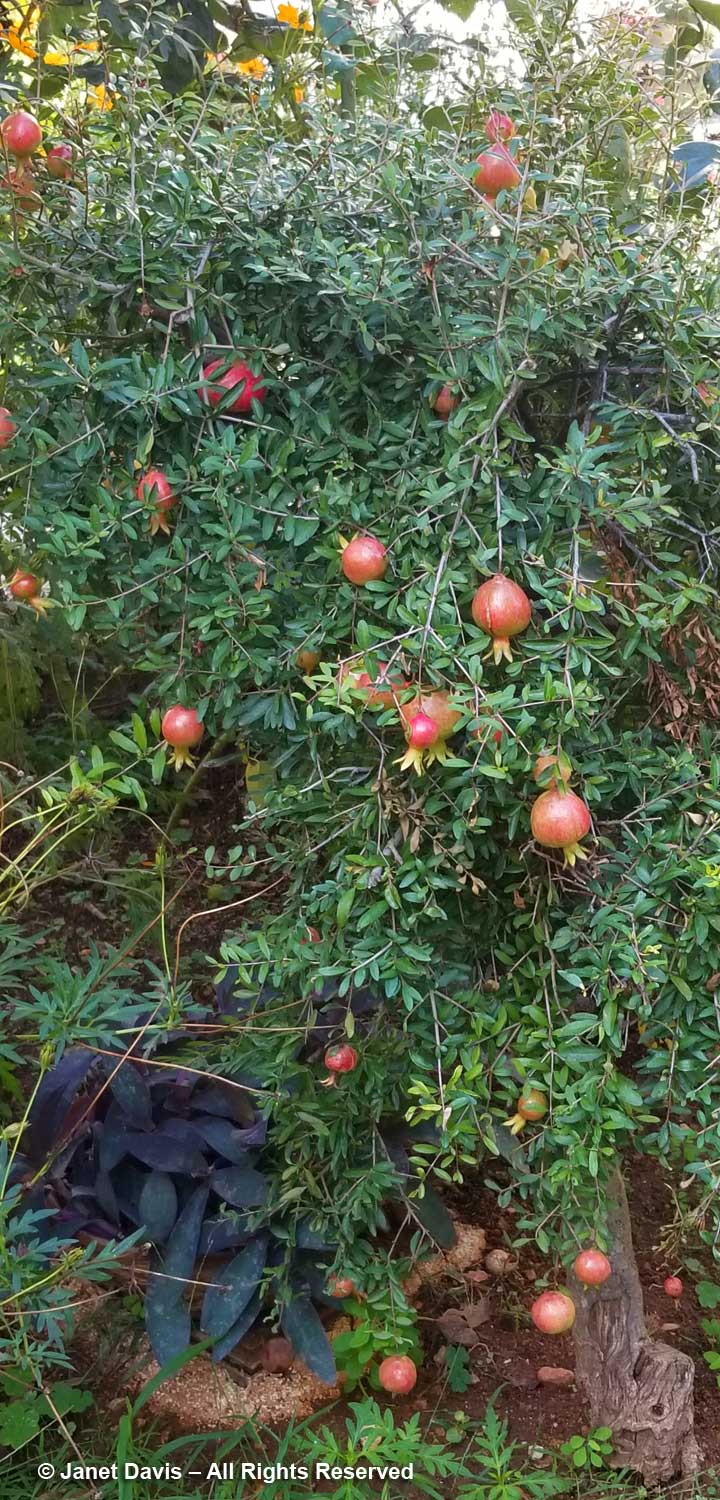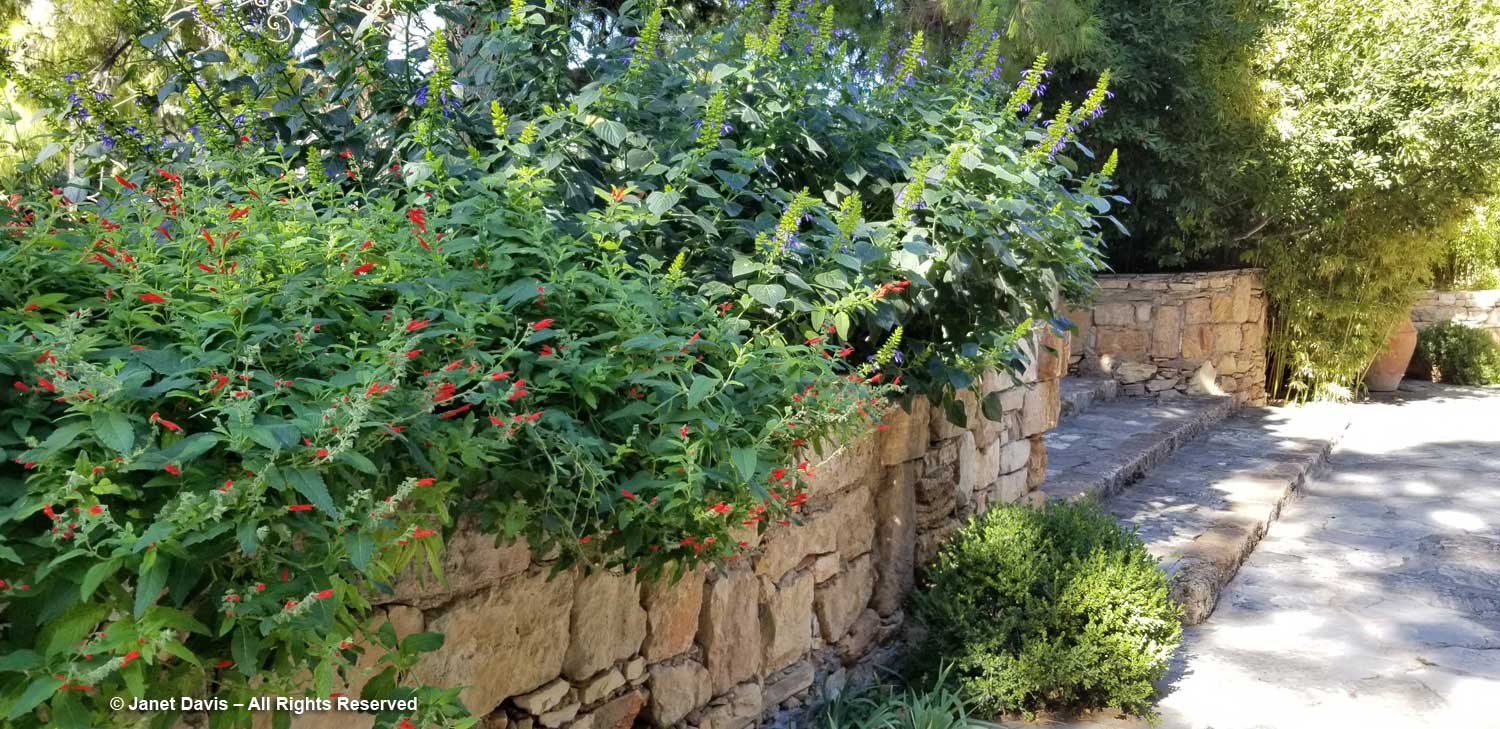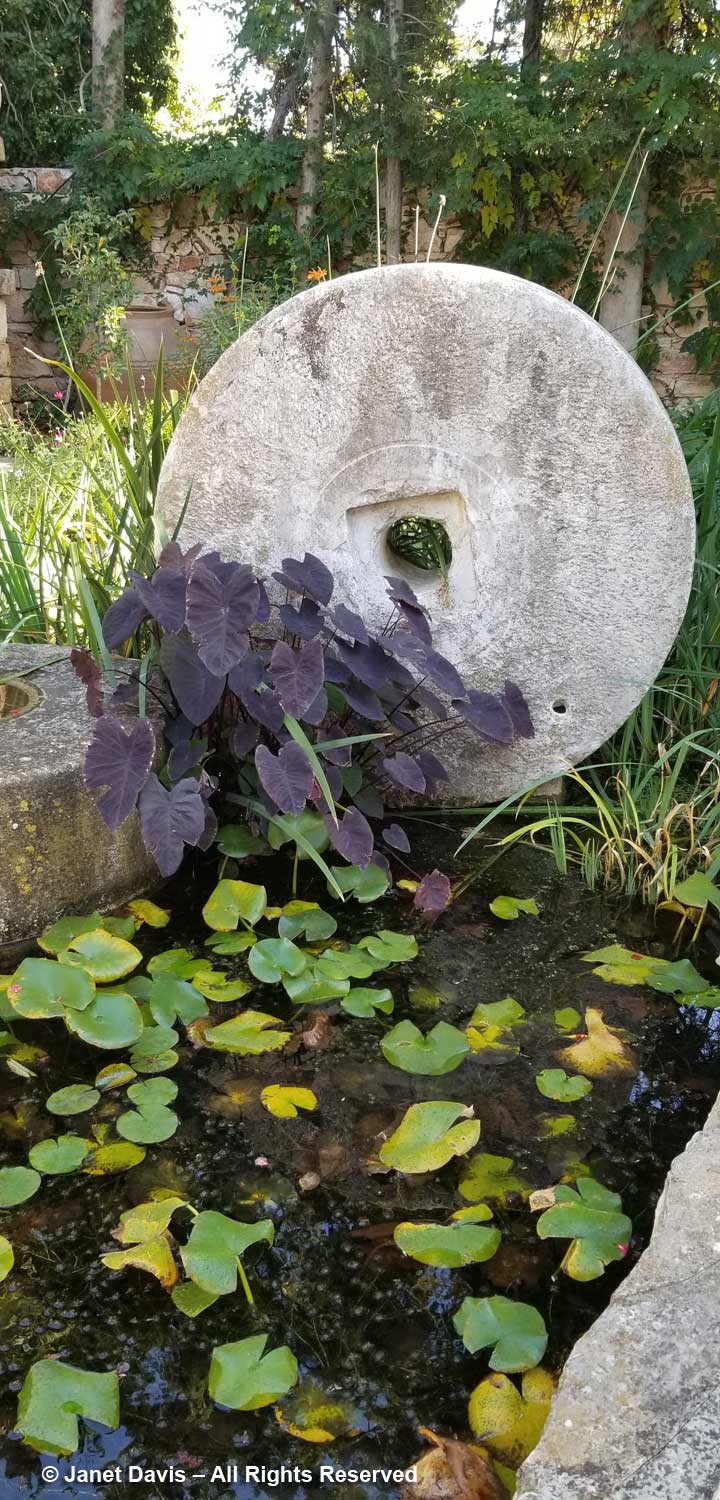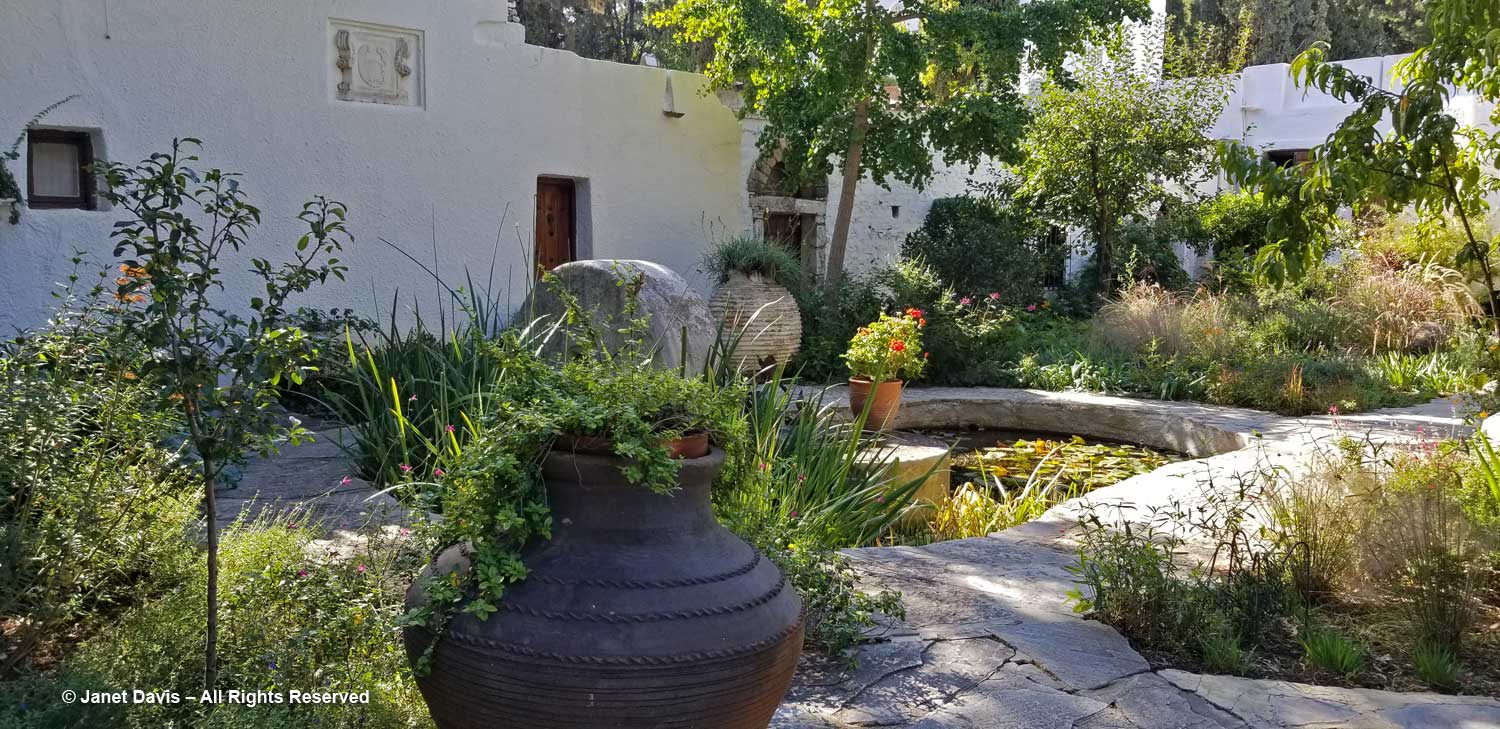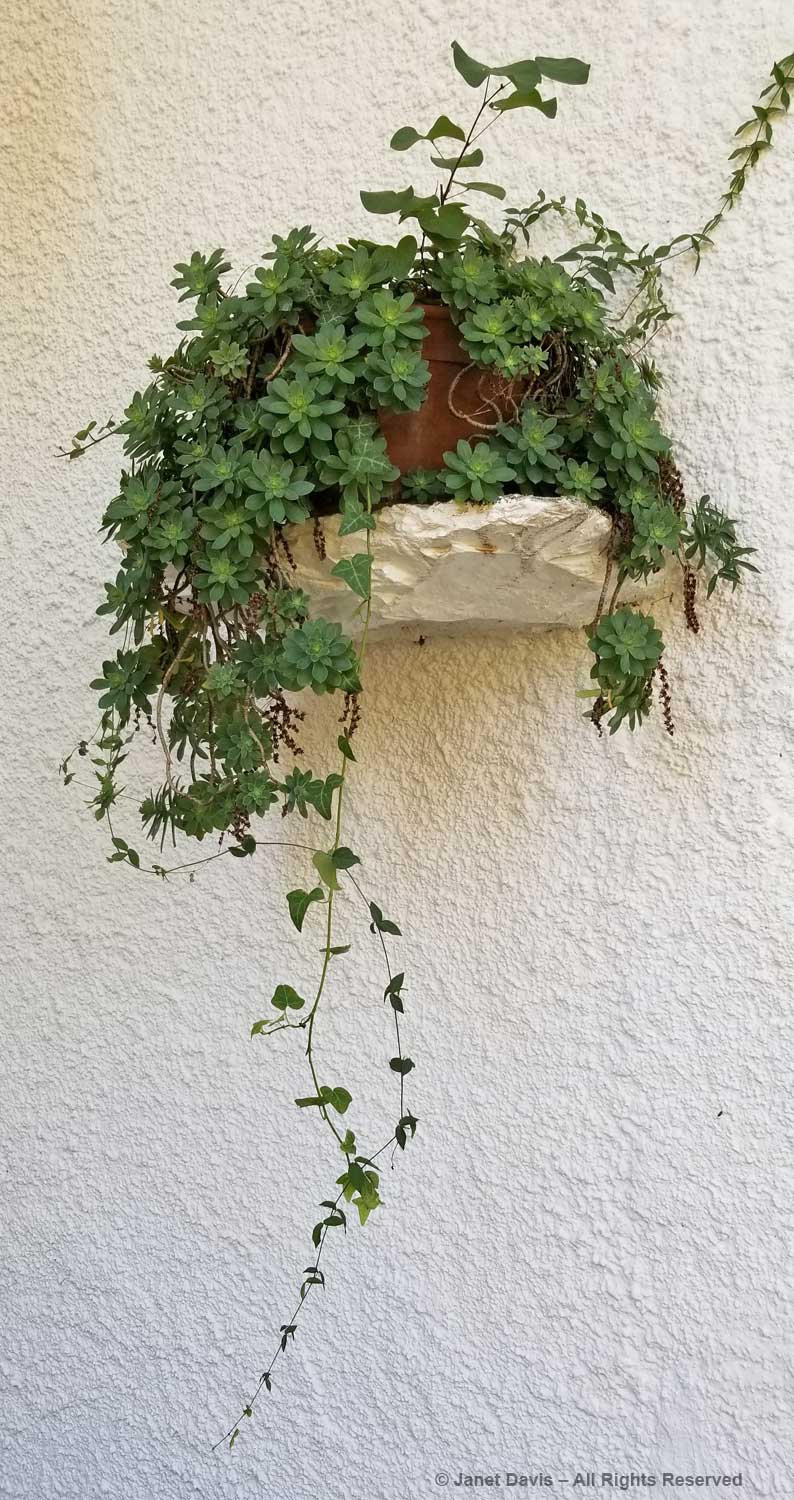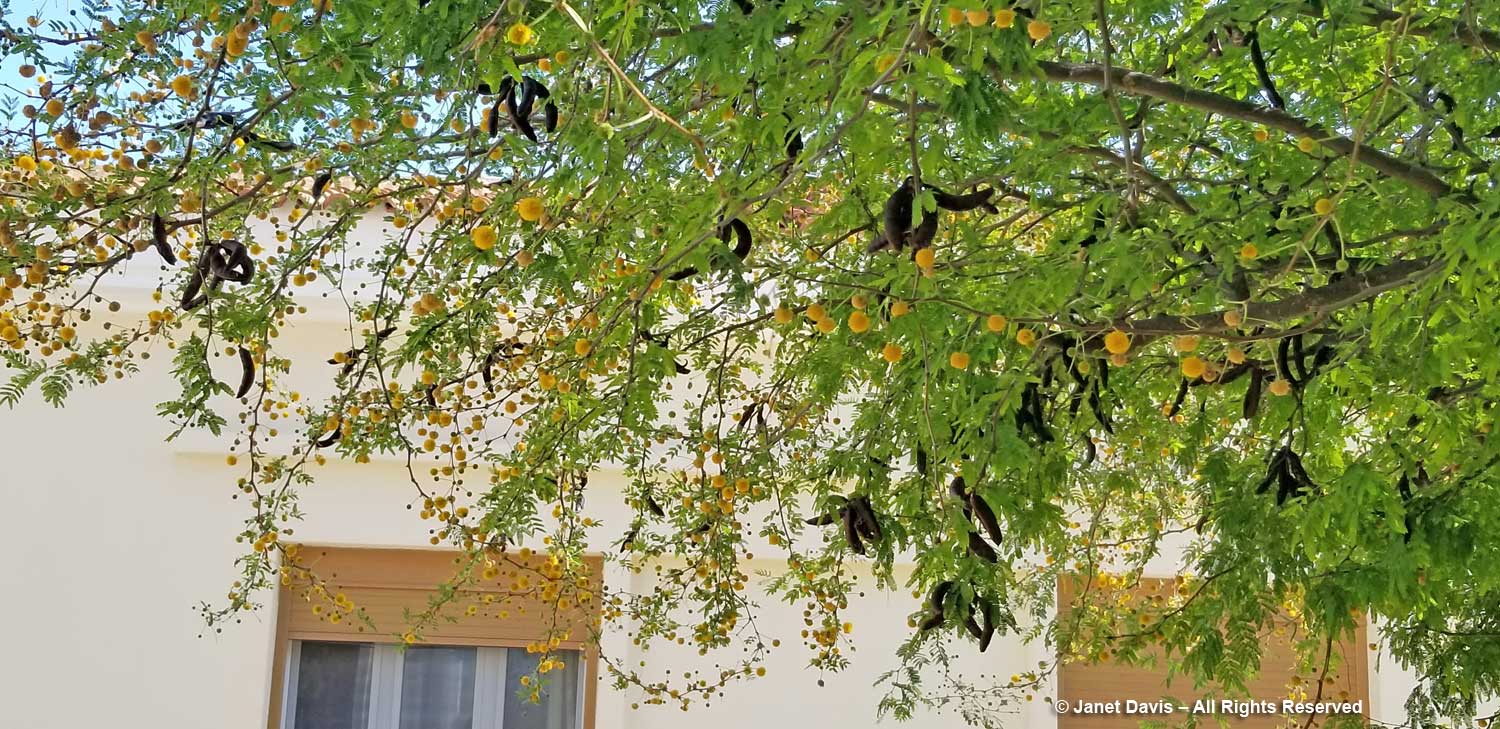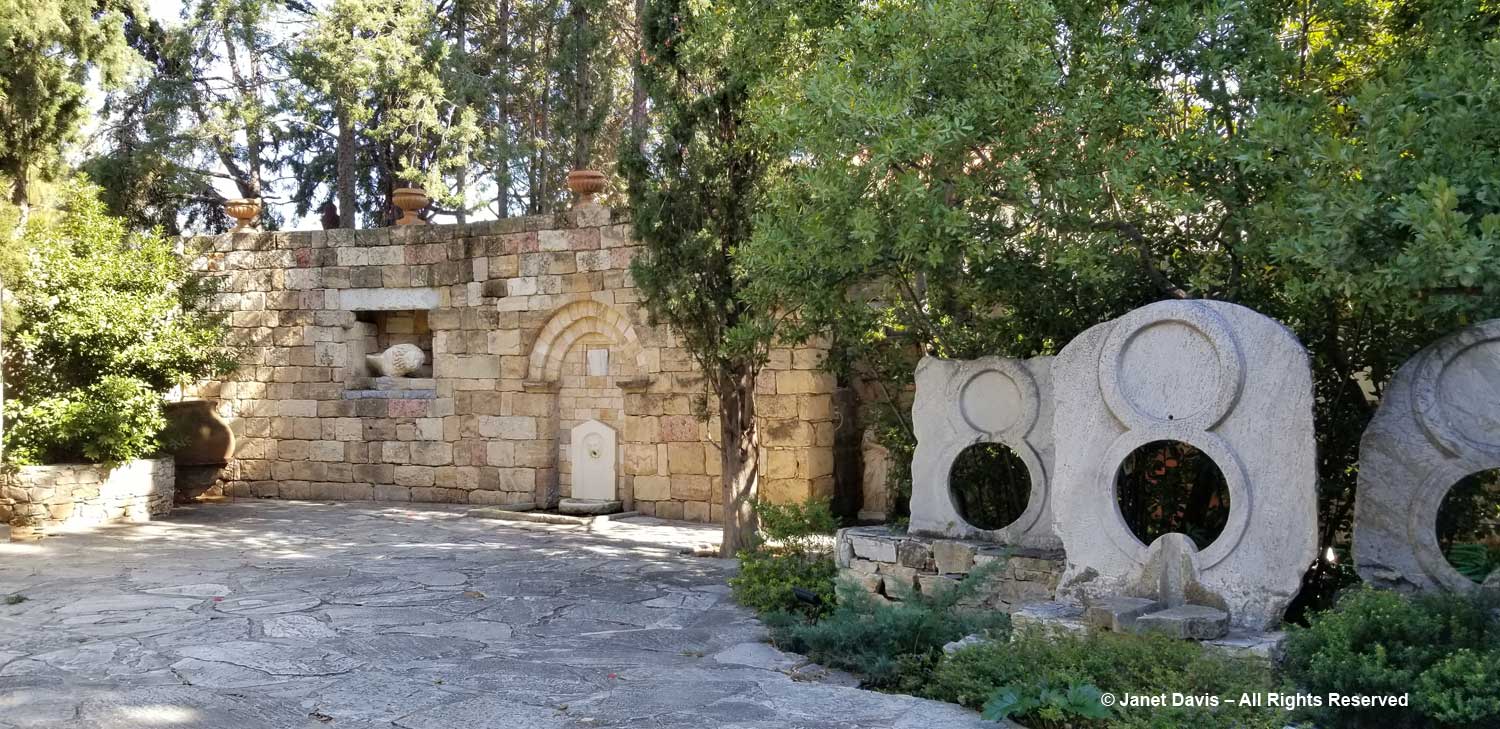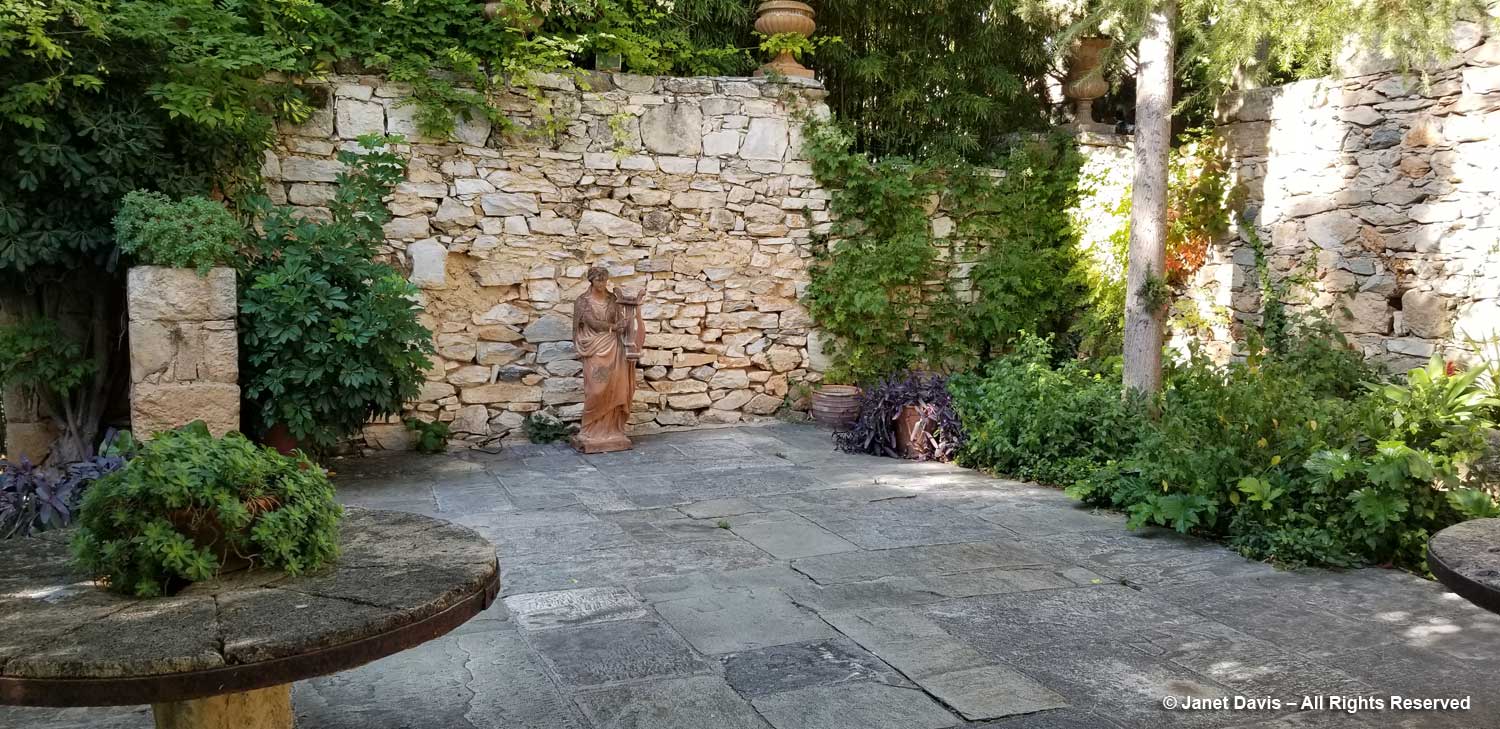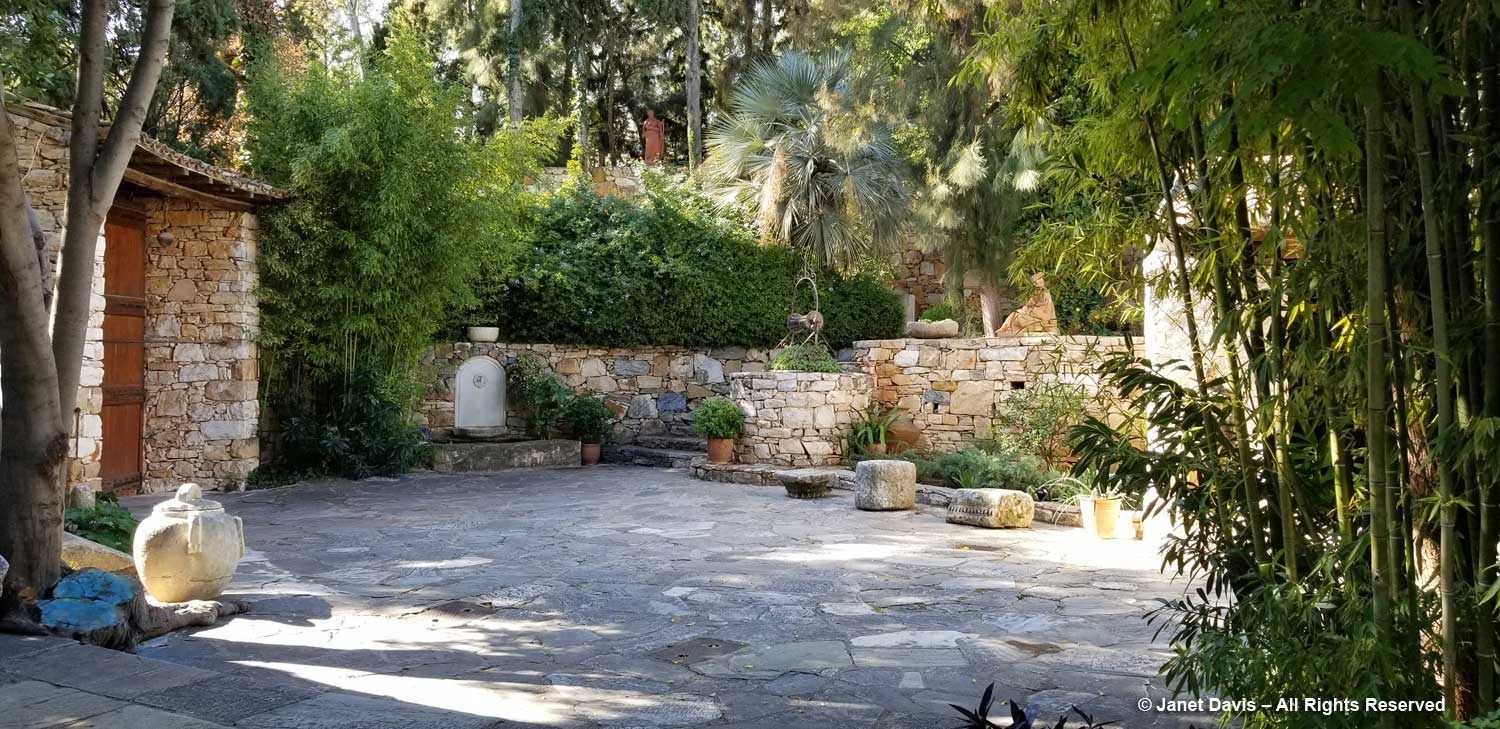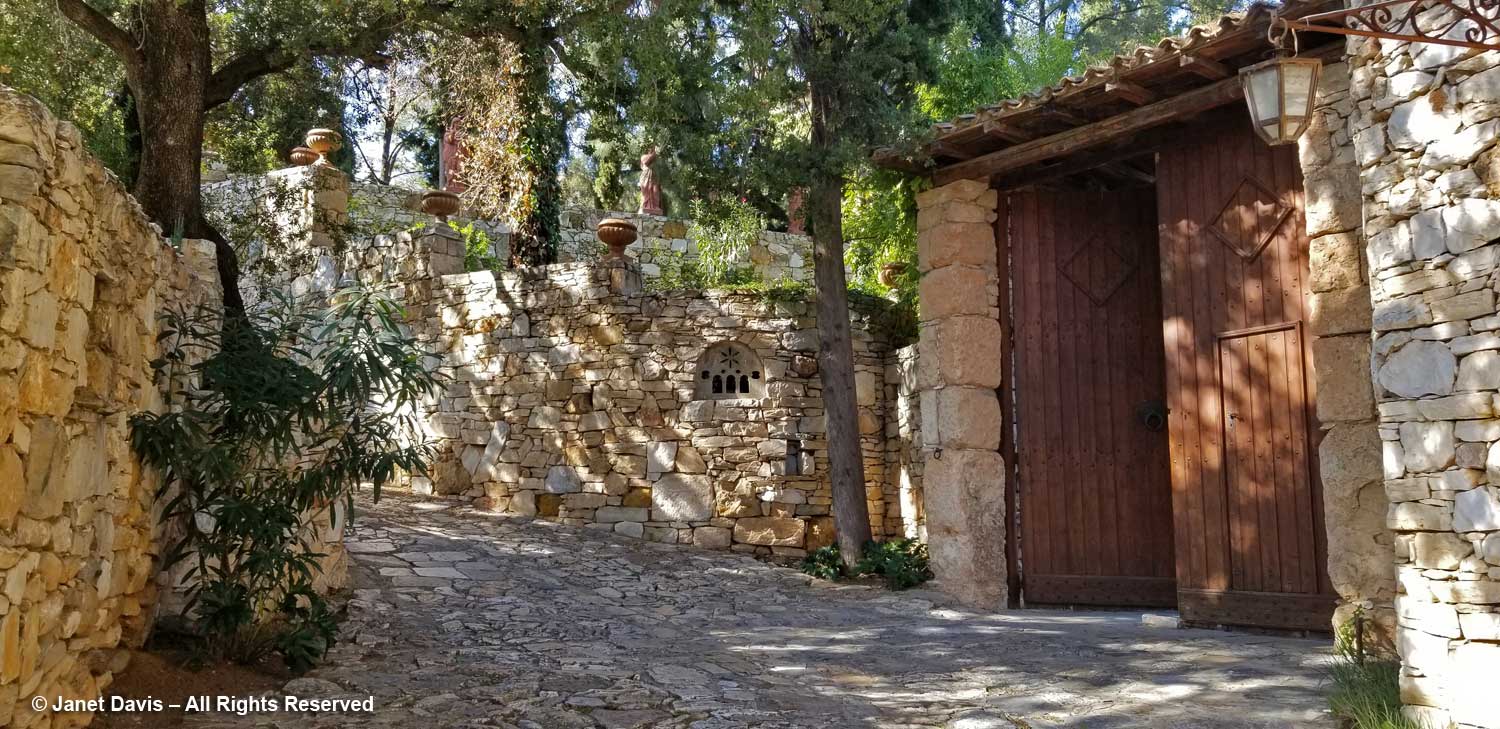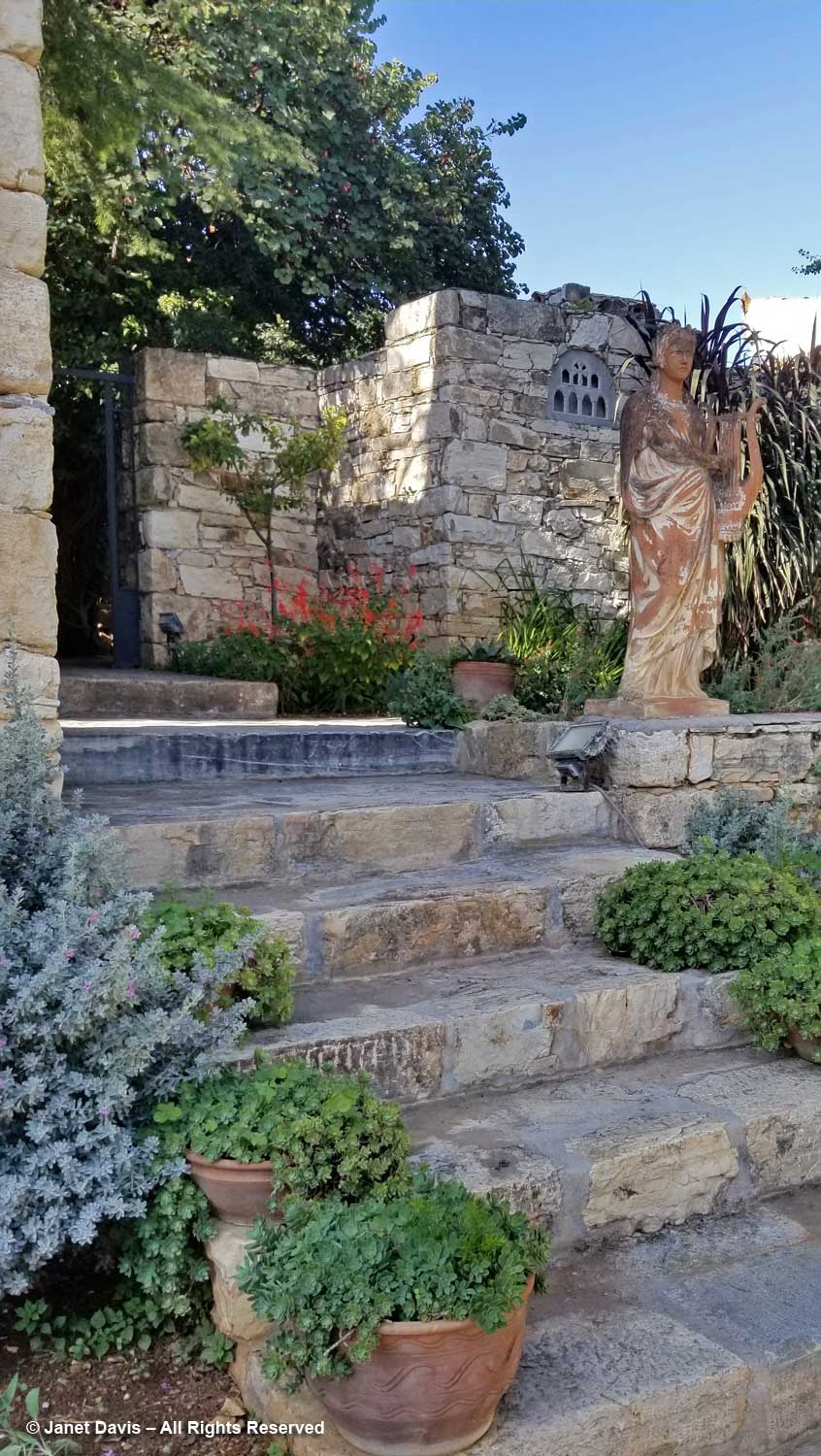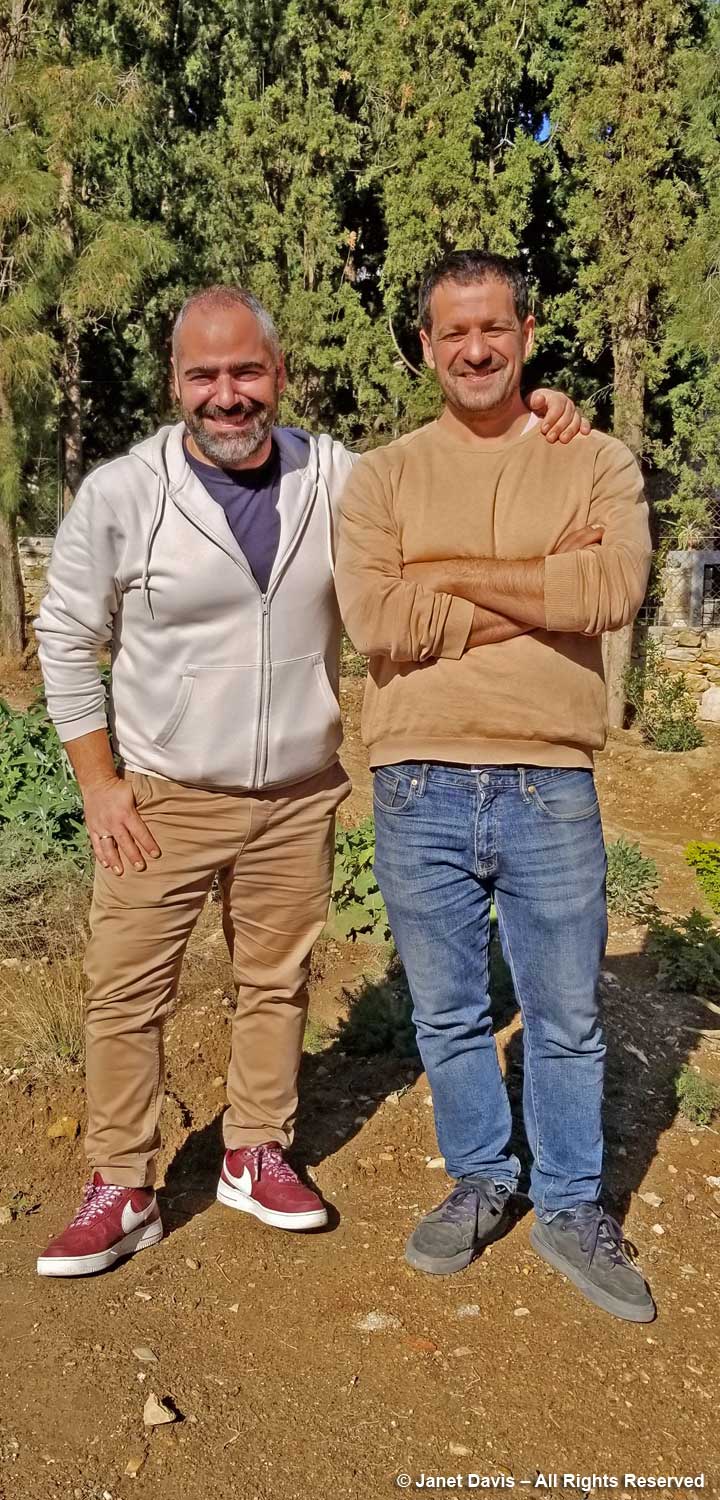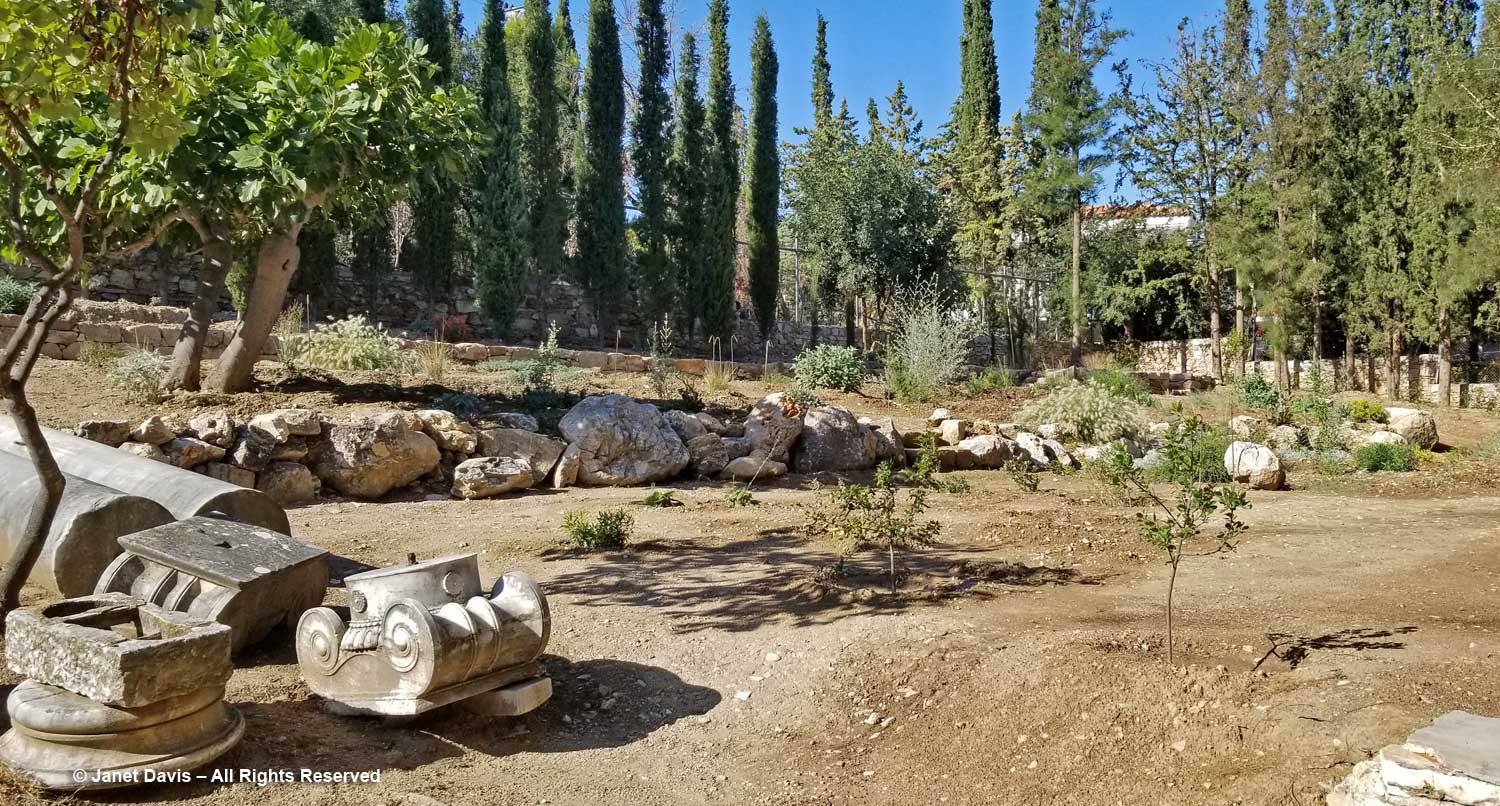One of the first stops on our Greek tour had a very Canadian connection. In the leafy Paiania neighbourhood, a suburb of Athens, we visited the beautiful Vorres Museum of Folk and Contemporary Art. Donated to the state in 1983 by its Greek-Canadian owner Ionos Vorres (1924 – 2015), it is an interesting complex, evoking both the clean, modern lines of contemporary Greek architecture and the rustic, whitewashed homes of a 19th century Attica village. Connecting those notions philosophically and physically by converting a few old houses and a stable to create a world-class collection of ethnographic folk art reaching back 2,500 years and a sleek gallery of contemporary art was the genius of Ion Vorres (Ian).
Viewed from the upper part of the property, the building surrounds a courtyard on three sides, the folk museum on the right, the modern gallery on the left.
We began our tour in the art gallery, passing a fountain of lantana to enter.
A light, airy space with pale brick walls, the gallery was designed in the late 1970s by Michael Fotiadis, co-designer with Bernard Schumi Architects of the new Acropolis Museum. Additions were made in 2004.
In the 1970s, when Ion Vorres began to collect works by 20th century artists such as Yannis Gaitis, ‘Human Landscape’ (1975), below, the National Gallery in Athens did not have a collection of modern paintings.
So Vorres became both collector and benefactor. That tradition continues today at the museum, with annual residencies and educational programs in which school children visit to do activities while discovering noted artists such as Dimitris Mytaras, below, and his ‘Yellow Tombstone’ (1970).
Given the times of much of the work in the gallery, created during the far-right Military Junta of Greece (1967-74), there is a distinct political slant that adds to the mystique of the works. Our tour guide was Ion Vorres’s grandson Nektarios Vorres, President of the Vorres Foundation, which oversees the museum. He stopped at his favourite work, ‘Hommage to the Walls of Athens, 1940-19…’ (1959) by Vlassis Caniaris, in which the artist recreated the images of the protest-laden walls of Athens during the Nazi occupation. Before the occupation ended, of course, the Civil War began in 1943 and lasted until 1949.
Hear Nektarios Vorres speak about the painting, below.
A personal note here. When I visited Greece in 2011 during a tour that began in Istanbul and travelled through the islands of Rhodes, Patmos, Lindos, Santorini, Mykonos and Delos, our one day in Athens happened to coincide with a national day of protest on the talks with the European Union. It was the time of ‘the debt crisis’ and nothing was open. My husband elected to travel to Delphi even though the site was closed, just to see the countryside. I decided to go downtown and watch the protests. I perched on a street railing and watched the people parade by: teachers, nurses, government workers, young, old, holding their flags and banners.
It occurred to me then that I come from a young country that has never been in the grip of a national crisis, economic or otherwise. Canada has fought in European wars, but war has never come to us. We have not been occupied, nor seized by the military, nor torn apart by civil war, nor invaded repeatedly in our brief century-and-a-half since confederation, unlike Greece and its tumultuous events over thousands of years. It is impossible for me to understand the depth of history that rests in the Greek psyche, the kind of scribbled history that Vlassis Caniaris was capturing on the Walls of Athens. But I could indeed watch this small moment in history pass by in downtown Athens.
*********
Then we came to Giorgis Derpapas‘s stately 1975 portrait of Ion Vorres, below. After graduating from the (American) Athens College at the age of 18, Vorres joined the OSS underground in 1942 and fought behind the enemy lines during the Nazi occupation of Greece. In 1944, he travelled to Canada where he received his BA from Queens University followed by an MA from the University of Toronto. He became a Canadian citizen and stayed and worked for some years, writing on art and architecture, organizing exhibitions, and authoring The Last Grand Duchess, about the exiled Grand Duchess Olga, sister of Czar Nicholas II. He returned to Greece in 1962, eventually selling the family company. But he was lured back to Canada for Expo 67 and named director of the Greek Pavilion, the only Canadian citizen to run a foreign pavilion.
Back home again, Ion Vorres looked for a way to celebrate the culture he saw rapidly disappearing as Greeks abandoned the countryside for the city, a massive flow of population that occurred after the Second World War. Determined to conserve important artifacts of Greek rural life, he began collecting; as the word went out people came to him with what Nektarios called their “old junk”. He lived in a small section of one of the houses as he oversaw the development of his museum while playing an active role in Greek cultural life, serving on boards and as an international cultural advisor. He was also Mayor of Paiania from 1991 to 1998. Among his honours were the Order of Canada (2009) and the Greek title Grand Commander of the Order of Honour (2014). In his final years, the debt crisis loomed large for Ion Vorres, as it did for all Greece’s cultural sites, reducing financial support from the state to which he’d bequeathed the museum and limiting the open days to weekends only. Today, a 10-member board of directors runs the foundation and the museum caters to special functions as well as fulfilling its mission focus.
We finished our tour of the gallery with a retrospective on the work of Jannis Spyropolous.
Then it was into the museum for a tour that was more like walking through a rambling home from the 19th century. Furniture, art, religious icons, textiles, household items….
….. and old millstones, all beautifully displayed with vases of tumbling bougainvillea blossoms.
I walked past shelves of coloured glass…..
…. with enticing views of the stone walls and their adornments in the garden beyond.
We finished in the old kitchen with its impressive paintings and….
….. collection of commemorative ceramic plates.
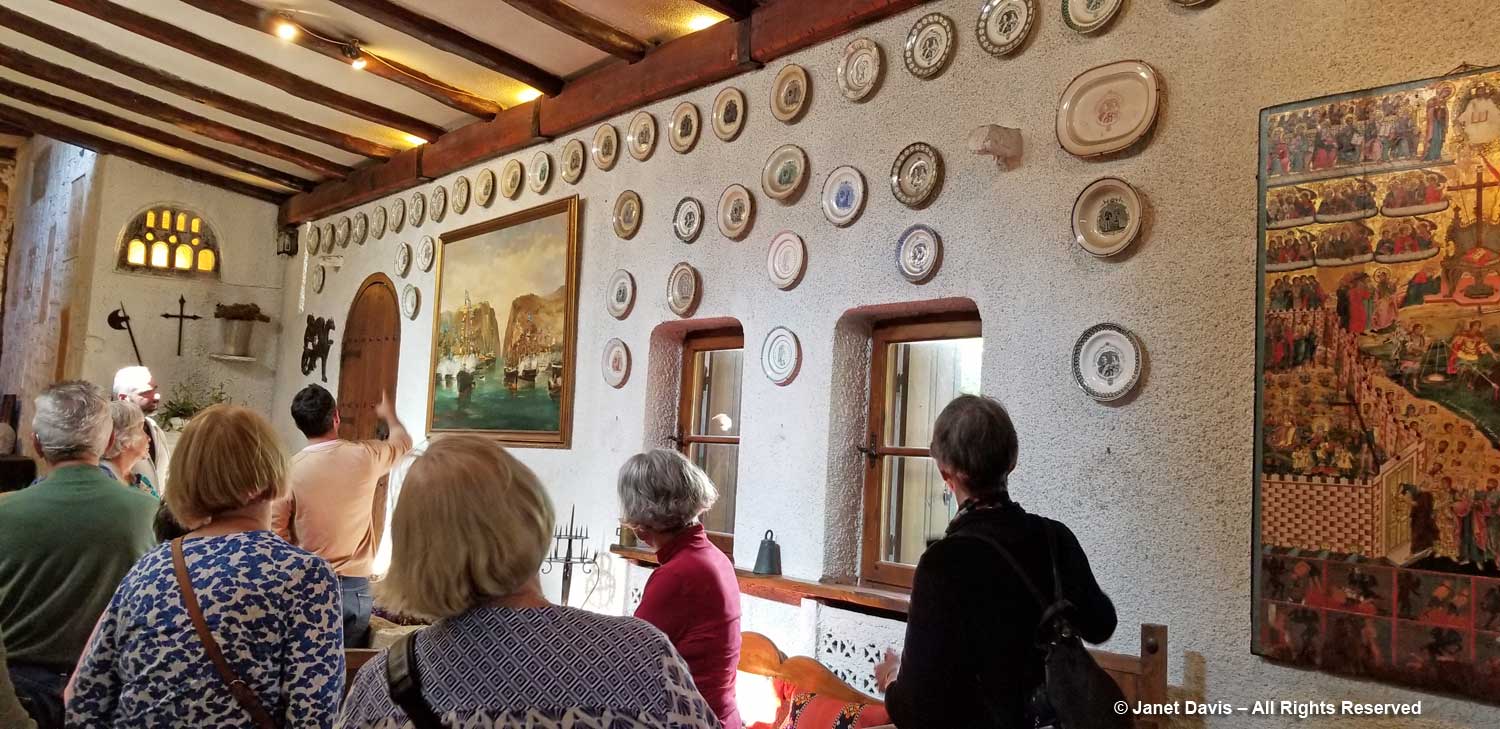
Then in was out into the garden, but not before a little introduction by Nektarios and our tour guide Eleftherios Dariotis, below left, who has been working on a more sustainable approach to the Vorres Museum courtyard gardens and their collection of Mediterranean plants. Not only has he redesigned the plantings to incorporate many indigenous and drought-tolerant plants, but he has also embarked with Nektarios on a brand-new dry garden behind the museum.
I loved this little cottage garden adjacent to the museum with its lime tree and a mix of interesting plants.
Against the white wall grew perfumed Hedychium gardnerianum, or Kahili ginger lily from the Himalayas. While we usually refer to botanical names as Latin, their roots are very often Greek. In this case, the genus name comes from the Greek words “hedys” for fragrant, and “chion” for white, referring to another species.
And there was the popular South African plant Leonotis leonurus, or lion’s ear, its etymological roots in the Greek words “leon” for lion and “otis” for ear, describing the fuzzy upper lip of each flower.
Nearby was a 70-year old pomegranate (Punicum granatum) full of fruit.
Easy-care sages (Salvia sp.), a Dariotis specialty, spilled over a wall.
A dark-leafed taro (Colocasia) adorned a millstone in a little pond.
This is the view from the other side.
A little greenery against the white wall.
Though native to the Caribbean, sweet acacia (Vachellia farnesiana) was imported into Europe in the 17th century.
Because of the configuration of the museum and gallery, there are numerous walled courtyards in which to stroll, each with its own selection of sculpture and plantings. And the dry stone walls are spectacular as background. Whether formal….
…. or informal, they are stellar examples of decorative stonework.
We toured our way to the courtyard just inside the….
….. tall gate and the driveway lined with more stone walls.
Then we climbed stairs to the upper part of the property……
……….. and listened to Eleftharios and Nektarios talk about the new garden……
…… taking shape here beyond the little pile of spare monuments(!) One day soon, visitors to the museum will be able to explore the wealth of indigenous Greek flora growing on this gentle slope: a leafy, yet no less important, heritage of the country that the Vorres family celebrates here in Paiania.

